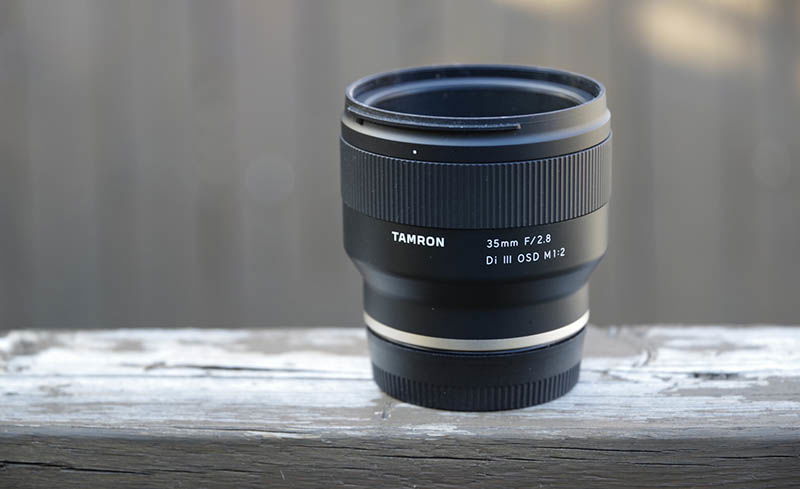
Introduction
Concluding our coverage of Tamron’s trio of wide-angle primes, we today take a look at the company’s 35mm lens.
The two other lenses in this group are much wider, at 20mm and 24mm. At 35mm, this review’s subject (model F053) stands a bit apart, edging closer to a “normal” focal length. The three siblings provide a fast F2.8 maximum aperture, 0.5x macro focusing, weather resistance and a light weight. All three share essentially the same body and are hard to tell apart at a glance. 35mm is a more conventional focal length than the other two, and faces more competition on the market (there are currently over 25 full frame 35mm lenses available on E-mount!). The Tamron does not offer a particularly fast maximum aperture, but comes at a very low price, is compact and lightweight, offers weather resistance and even 1:2 macro magnification, making it a compelling option.
In this in-depth review, we will take a look at all the technical and artistic parameters which help to define a lens. Read on to find out everything there is to know about the Tamron 35mm F/2.8 Di III OSD Macro 1:2!
Table of Contents[Hide][Show]
Specifications
| Lens Name | Tamron 35mm F/2.8 Di III OSD M1:2 (Model F053) |
| Optical formula | 9 elements in 8 groups |
| Image circle | Full frame |
| Field of view diagonal | FF: 63° APS-C: 44° |
| Aperture range | F2.8/F22 |
| Aperture blades | 7, curved |
| Aperture ring | No |
| Max magnification | 0.5x |
| Minimum focus distance | 150mm |
| Internal focus | Yes |
| Filter thread diameter | 67mm |
| Lens cap | Plastic, clip-on |
| Lens hood | Removable square-shaped |
| Diameter x Length | 73 x 64 mm (2.9 x 2.5 in) |
| Weight | 210 g (7.4 oz) |
| Price (US MSRP) | $249 |
Construction and Handling
In this section, we take a look at the physical characteristics of the Tamron 35mm. Note that given the similarities, many aspects and comments will be identical to those from our Tamron 20mm and 24mm reviews.
Front Element
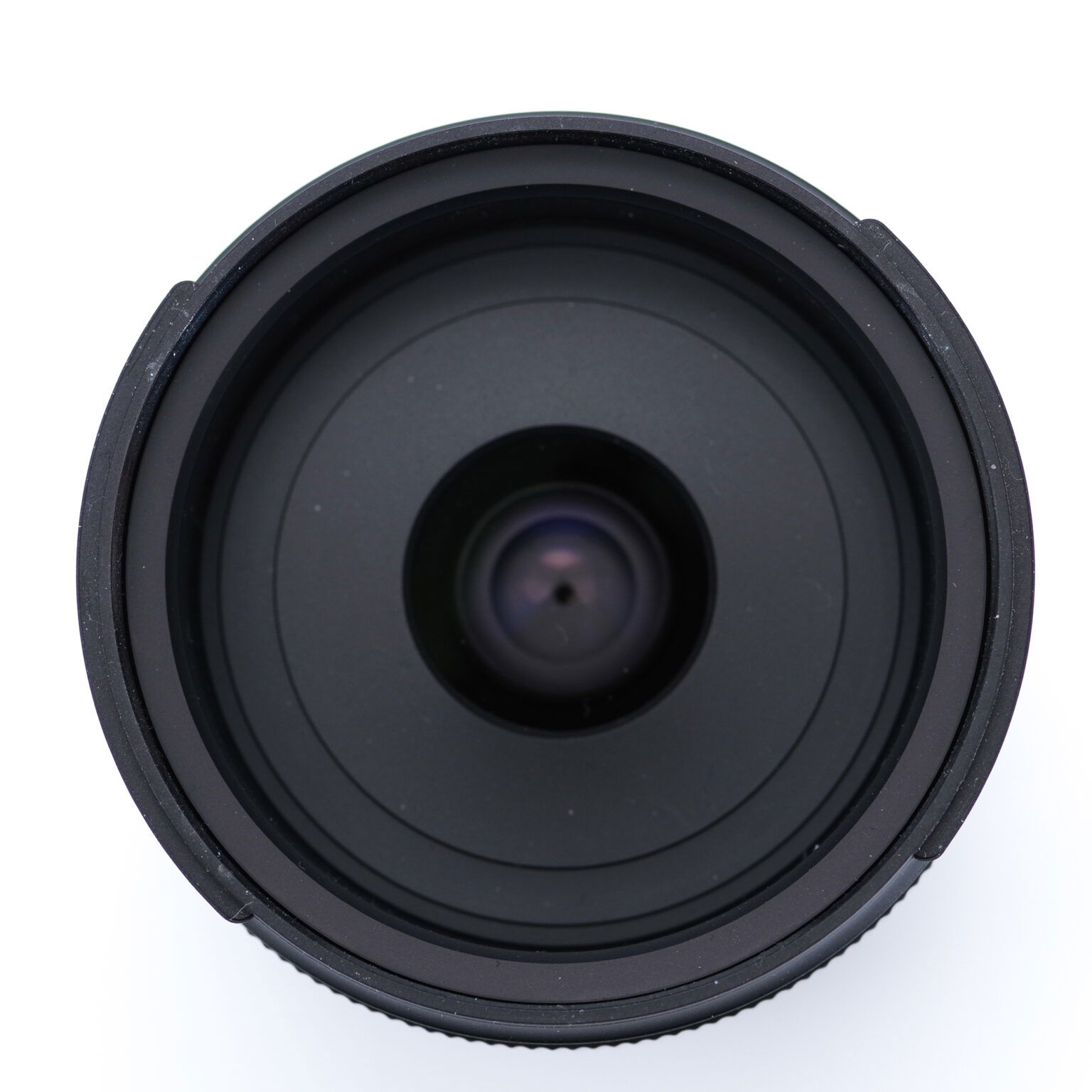
The front of the lens is devoid of markings. The glass takes up a relatively small part of the total front surface.
The lens uses a large 67mm filter thread. This diameter is shared with its siblings the 20mm and 24mm, as well as most other FE-mount Tamron lenses. It makes it easy to use a single set of filters for several lenses.

The lens cap is plastic, and a bit thick.
Lens Body
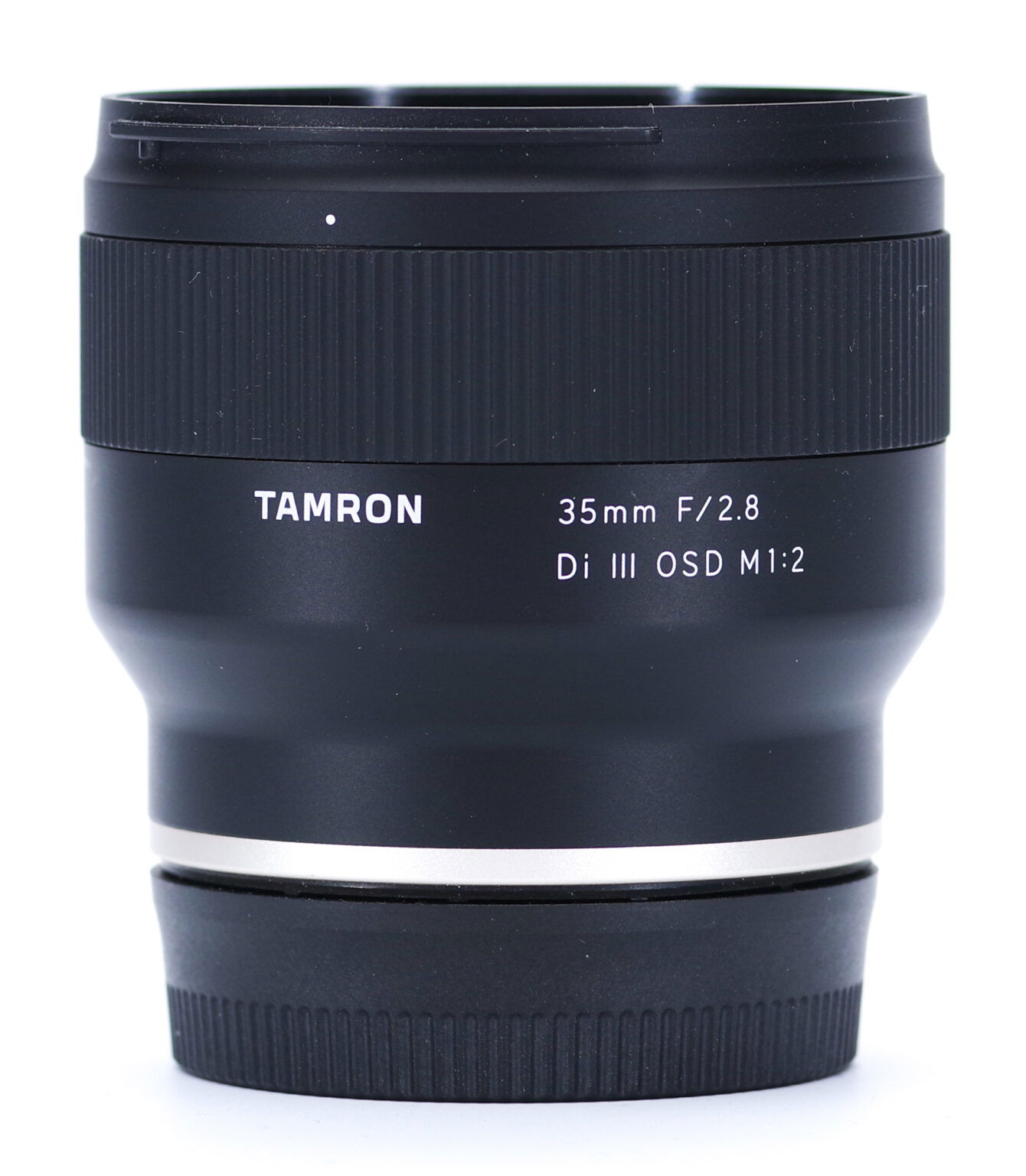
The Tamron 35mm has a simple body with a minimum of features and controls. It is also extremely light weight.
The bottom of the body, near the camera mount, bears a silver ring. This nicely matches the dual-color of the Sony A7C. A discrete mark next to the silver ring helps to line up the lens for mounting. Above, the lens tapers out to a larger diameter.
Higher up are the only markings on the lens. At the center is the brand name, and to the right is the lens name. At the back are the certification markings and the “Designed in Japan” label. Next is the wide focus ring. As with other E-mount lenses, the 35mm uses focus by wire and, while it does offer manual focus override, this must be activated in a menu and cannot be used with continuous AF. There is no switch for manual focus on the lens.
The ring is ribbed and easy to find.
The lens does not extend when focusing.
Aperture
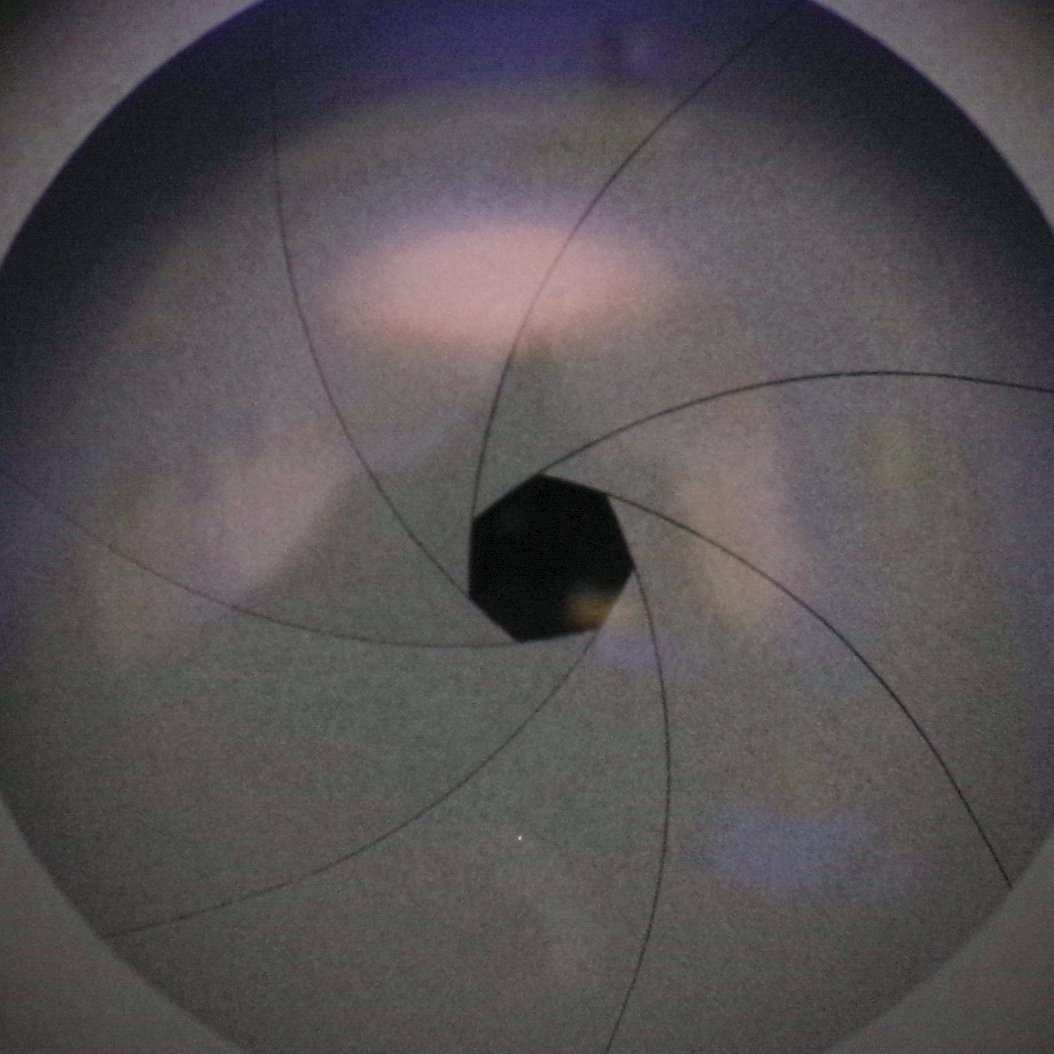
The Tamron 35mm uses 7 curved aperture blades.
Lens Mount

The lens mount is metal, and features a black o-ring to protect against water ingress. There is a rectangular cut-out on the back, to diminish stray reflections. To some extent, it serves a function akin to a lens hood.
Lens hood
The lens ships with a plastic lens hood. This one is different than the usual: it is a kind of cup covering the front of the lens, with a rectangular cutout. The front is threaded with the same 67mm diameter as the lens itself, and the lens cap can be attached on the hood also. Because of its shape, the hood isn’t meant to be reversed. It is an unobtrusive design, easy to leave on at all times. It also strongly suggests that the lens could have been made much smaller if not for the desire for consistency between the three Tamron primes.
Mounted On Camera
The Tamron 35mm looks right at home on the Sony A7C, for which it is an excellent match.
Side by side
Here is the Tamron 35mm next to Sony’s FE 28-60mm and the Tamron 24mm, an identical twin. For size comparison, note the thicker caps on the Tamron lenses.

Focusing
As was the case with Tamron’s 20mm and 24mm, focusing with the 35mm F2.8 is for the most part pleasant. The lens is not completely silent; it emits some clicking sounds when adjusting focus, especially for larger ranges variations. These will not be audible in most situations but will be noticeable for the photographer in silent environments.
Focusing can feel sluggish when the lens needs to rake through the whole range. Smaller adjustments, on the other hand, are almost instant. The 35mm keeps up flawlessly with subject tracking using AF-C. It supports every focusing mode available on the A7C.
There are no switches or dials on the lens, controls are all done via the camera, which makes using manual focus cumbersome at times. The focus ring is surprisingly well dampened and shouldn’t move accidentally. It also gives adequate feedback to the user, better than expected but nothing special. The precision of the focus adjustments will be dictated by the speed of rotation of the focus ring. Tamron did a good job even though focus-by-wire is not as direct as mechanical focusing.
We observed no occurrences of hunting during our tests.
AF Speed
AF speed was tested with the A7C. The subject was a black cross on a white background, about 1.5 meters in front of the camera. We used the central focus point. Three measurements were averaged for each data point.
For reference, 5 EV corresponds roughly to a small room lit with a 60 W bulb, and a sunny day corresponds to 16 EV, and a moonlit night to -2 EV.
Usually, we test AF speed by moving from infinity to about 1.5m. In this case, in part because of the close focusing capabilities of the lens, its AF speed is quite different depending on the starting point.

Just like its siblings, the Tamron 35mm doesn’t impresses with its static AF speed. When moving from infinity to the target, the speed is adequate, no more, and does not improve much as light conditions get better. When focusing from close distances, the lens takes between 4 and 5 seconds to lock focus in low light conditions, and only improves when light levels get higher.
In summary, it behaves similarly to, but slightly worse than, the Tamron 24mm. The company’s 20mm is still in the same ballpark, but does a bit better overall.
AF Tracking
AF tracking, or continuous AF, is a hallmark of Sony cameras. As such, it is important to evaluate whether or not the Tamron 35mm can keep up with fast movements of the subject.
In our experience, the lens performs very well in this regard, comparable to the Tamron 20mm and 24mm. Once focus is locked, the camera keeps up with most subject movements. We rarely never encountered occurrences when the camera would lose its focus lock once achieved except at close distances. In this regard, the lens performs better than with single AF.
The following animation shows a series of 18 images, and involves movement towards the photographer, followed by a rotation. The last three images are out of focus; it is obvious that the camera completely lost focus on the third to last frame, and was not able to find the focus back again.

General Image Quality
Before diving into the technical aspects of this review, let’s have a look at the more subjective elements which can make or break an image.
Field of View
35mm is almost as common as 50mm. Designers have known for a long time how to make good 35mm lenses. This focal length has often been referred to as the ideal single focal length to use: not too wide, and not too narrow. Indeed, it can serve for street, portraits, landscapes, just about anything. Thanks to this lens’ close-up capabilities, it can truly serve as a jack-of-all-trades.
While not always as convenient as wider lenses, the 35mm can serve quite well for architecture and cityscapes. Distortion is usually lower, and perspective isn’t as distorted as with many wider angles lenses.
As a close focusing lens, the 35mm is a more convenient tool than Tamron’s 20mm and 24mm, simply because the narrower field of view makes it easier to exclude unwanted elements from the frame.
Having a dependable, wide angle lens capable of 1:2 magnification offers a wealth of possibilities.
Color and Contrast
Just like its siblings, the 35mm produces rich colors, well saturated. There is a recognizable look to those three lenses. They also react well to post-processing.
Starbursts
Starbursts are not particularly impressive. Below F8 there is nothing to see and, even at that value, what rays we observe are diffuse. Closing down to F11 improves the effect slightly but the rays diverge and are not very well defined.
In short, the starbursts are of average quality, not particularly remarkable.
Metering and Exposure
We observed no overexposure occurrences with this lens. Exposure was consistent and reliable.
Sharpness
Sharpness, or a lens’s ability to resolve small details, is far from the only important characteristic of a lens, but it is probably the one which many users look at first. Soft images distract the viewer and the sharpest point in an image draws the eye of the viewer.
There are several ways to measure resolution. Some are quantitative, such as the number of lines per millimeter that can be resolved, while others are comparative, such as using a standardized scene to pit lenses against one another. We will use the latter, and supplement it with real-life samples.
To evaluate sharpness, we use a standard test chart that can be used to compare lenses to one another. We place the camera and lenses at a distance of 100x the focal length, so that the chart occupies the same area on all test images. This results in distances of 3.5 m in the present case. The chart is positioned successively in the center, on the edge and corner off the frame, testing all apertures each time. Focus is repeated for each position to avoid field curvature contributions.
This test will not show how good a lens can be. Quite the contrary, it is a stress test to illustrate the limits of a lens’s capabilities.
Resolution is of course sensor-relevant. For this test we use the A7C camera’s 24 MP sensor.
Test results at 35mm
The following images illustrate the results at all apertures at 35mm.
| Center | Edge | Corner | |
| F2.8 | 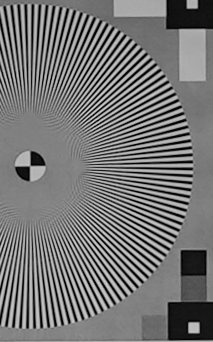 | 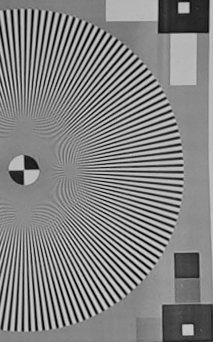 | 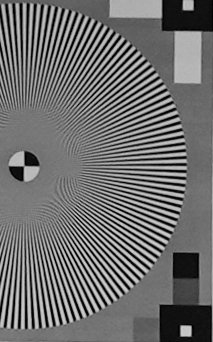 |
| F4 | 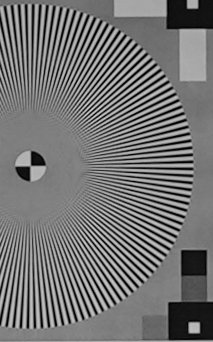 | 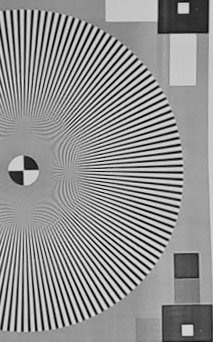 | 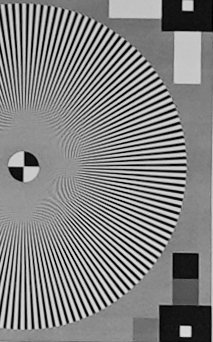 |
| F5.6 | 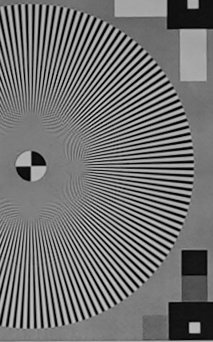 | 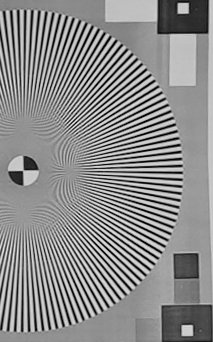 |  |
| F8 |  | 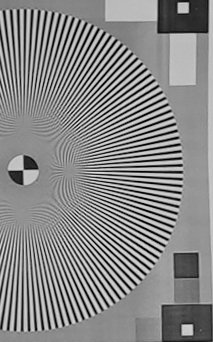 | 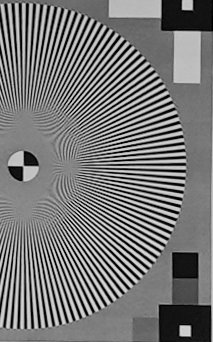 |
| F11 | 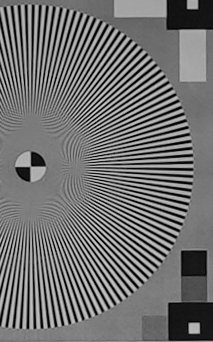 | 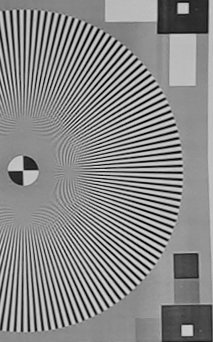 | 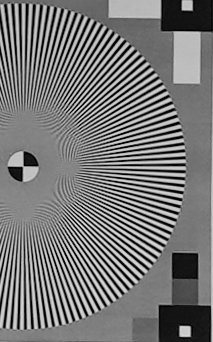 |
| F16 | 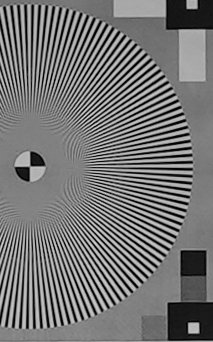 |  | 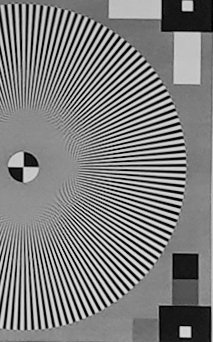 |
| F22 | 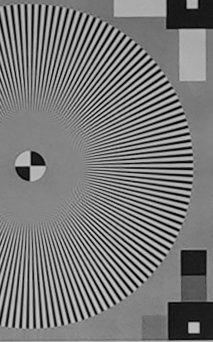 |  | 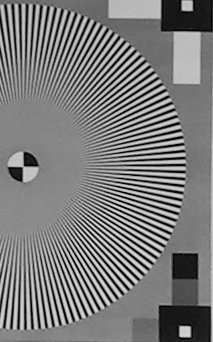 |
Resolution figures with the Tamron 35mm leave nothing to be desired.
The first takeaway is that uniformity is very high across the frame, at all apertures (even wide open).
The second is that, except for F16 and F22, all apertures deliver nearly identical results, and that those results are excellent. Results are almost impossible to distinguish between F2.8 and F8.
Corners might lag slightly behind at wider apertures, but the difference will have no impact in most scenes.
Impressive results, better than Tamron’s 24mm and at least as good as the 20mm.
The images below show the level of sharpness attainable when using close focusing.
Summary
Excellent sharpness, impressive uniformity, the Tamron 35mm goes beyond expectations regarding sharpness.
Vignetting
Vignetting, or the darkening of corners at wider apertures, is both a defect and a feature, as it can be used creatively to put emphasis on subjects closer to the center, create a mood or a vintage look. It can also be corrected automatically by modern cameras so is less of a problem than in the past. That is only true for lenses with electronic contacts, including the Tamron 35mm.
The following chart illustrates the vignetting of the lens for full frame when left uncorrected.

The 35mm’s designer visibly decided to rely on automated corrections for vignetting. This is not surprising but certainly something to be aware of. Wide open, vignetting is strong and will be visible in most scenes. Closing down brings the effect below 1 EV, harder to notice in many cases. We recommend using automatic correction profiles to avoid the effect.
Note that the Tamron 35mm does slightly better than the company’s 24mm, and comparably (although not identically) to their 20mm.
The images below show the lens’s vignetting at varying apertures.
| Full frame 35mm | |
| F2.8 | 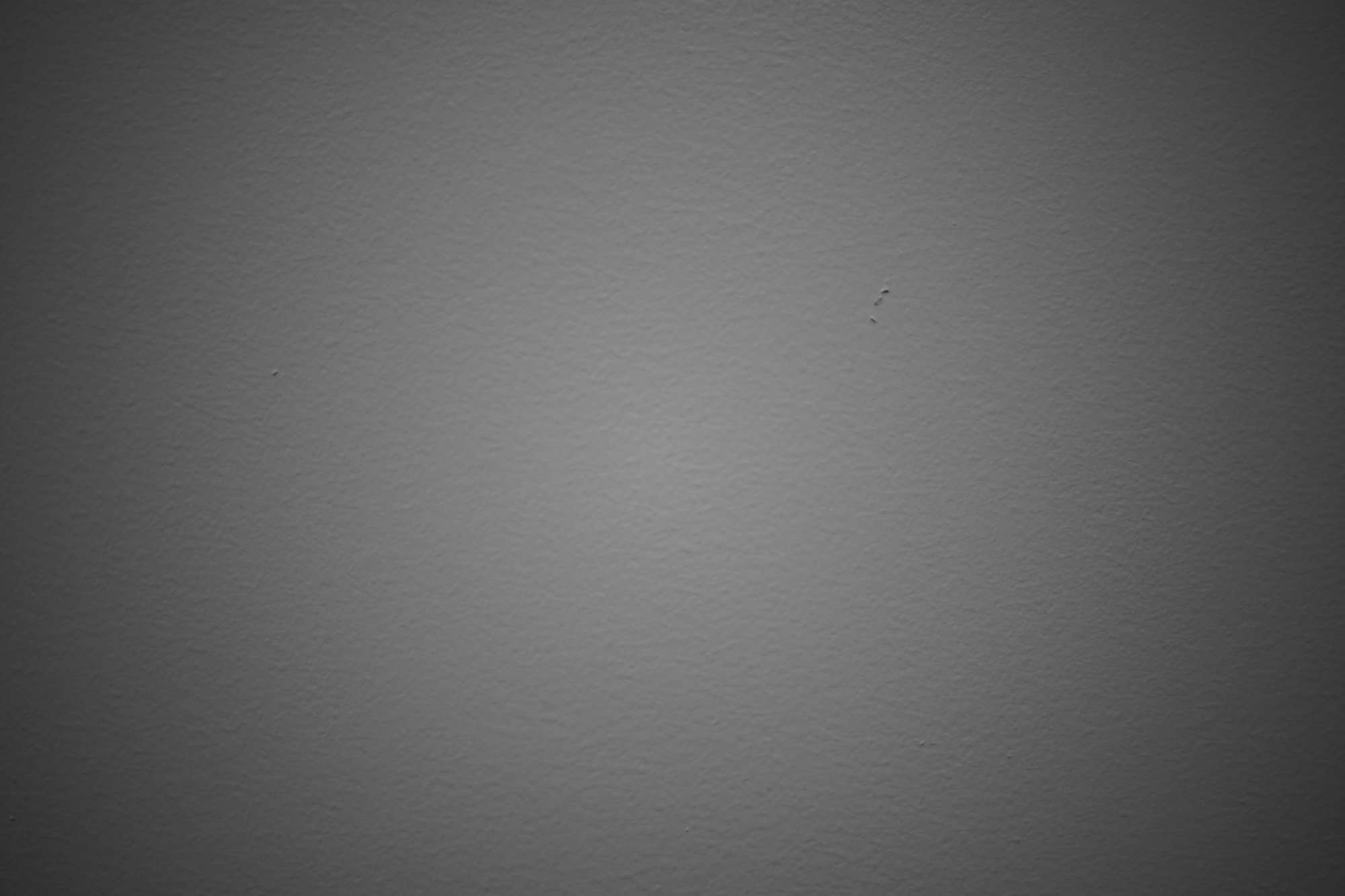 |
| F4 | 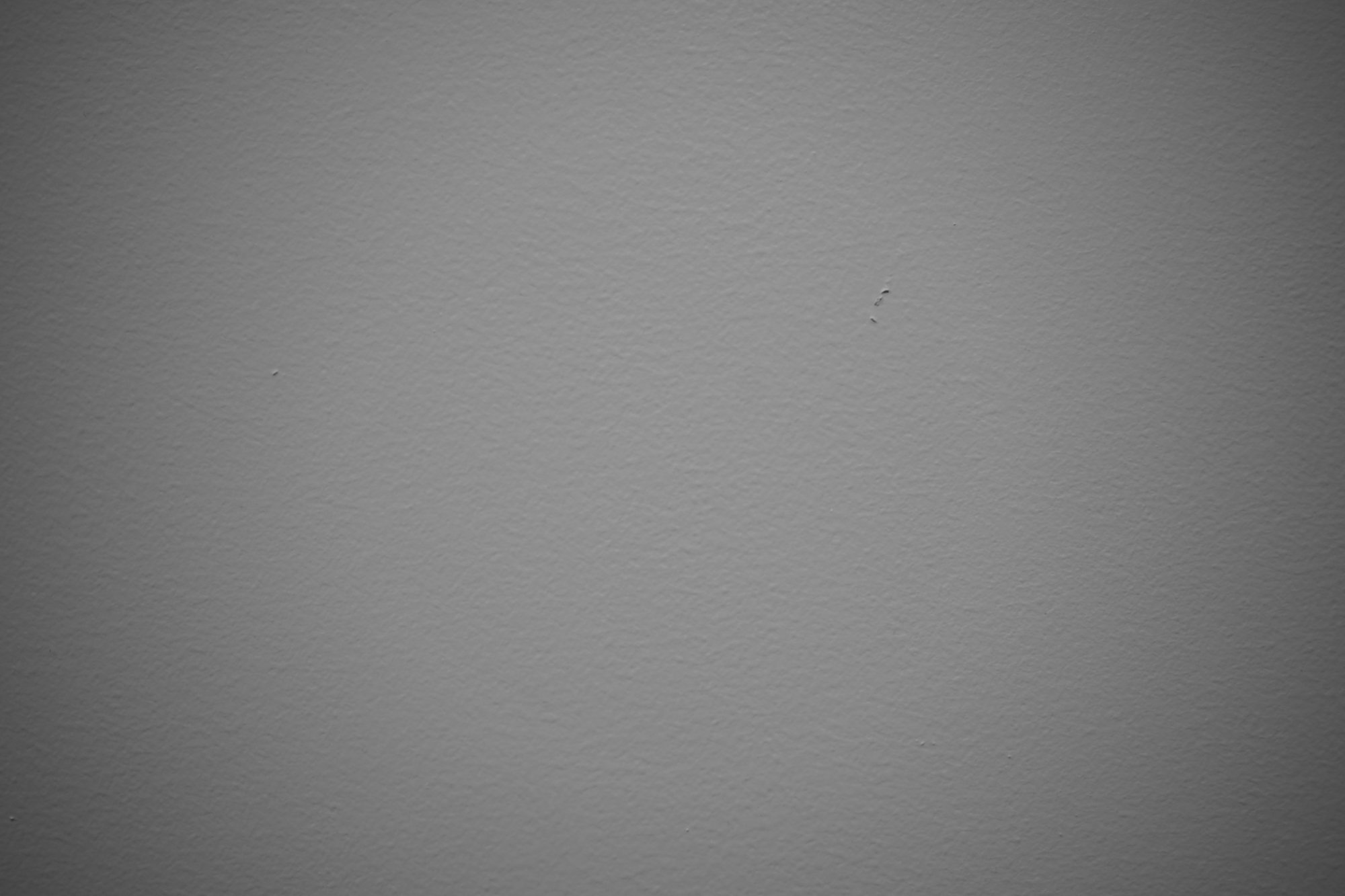 |
| F5.6 | 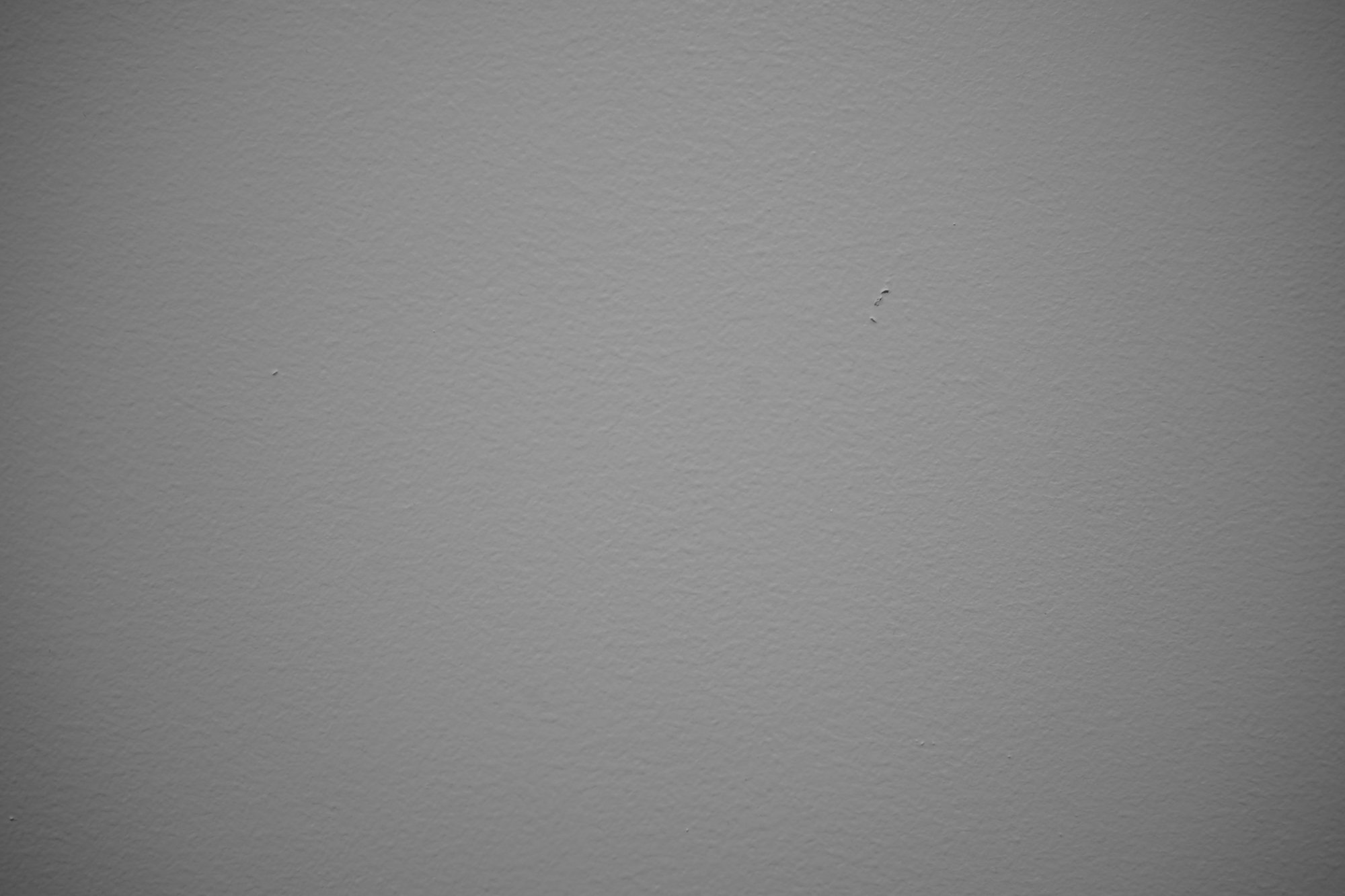 |
| F8 | 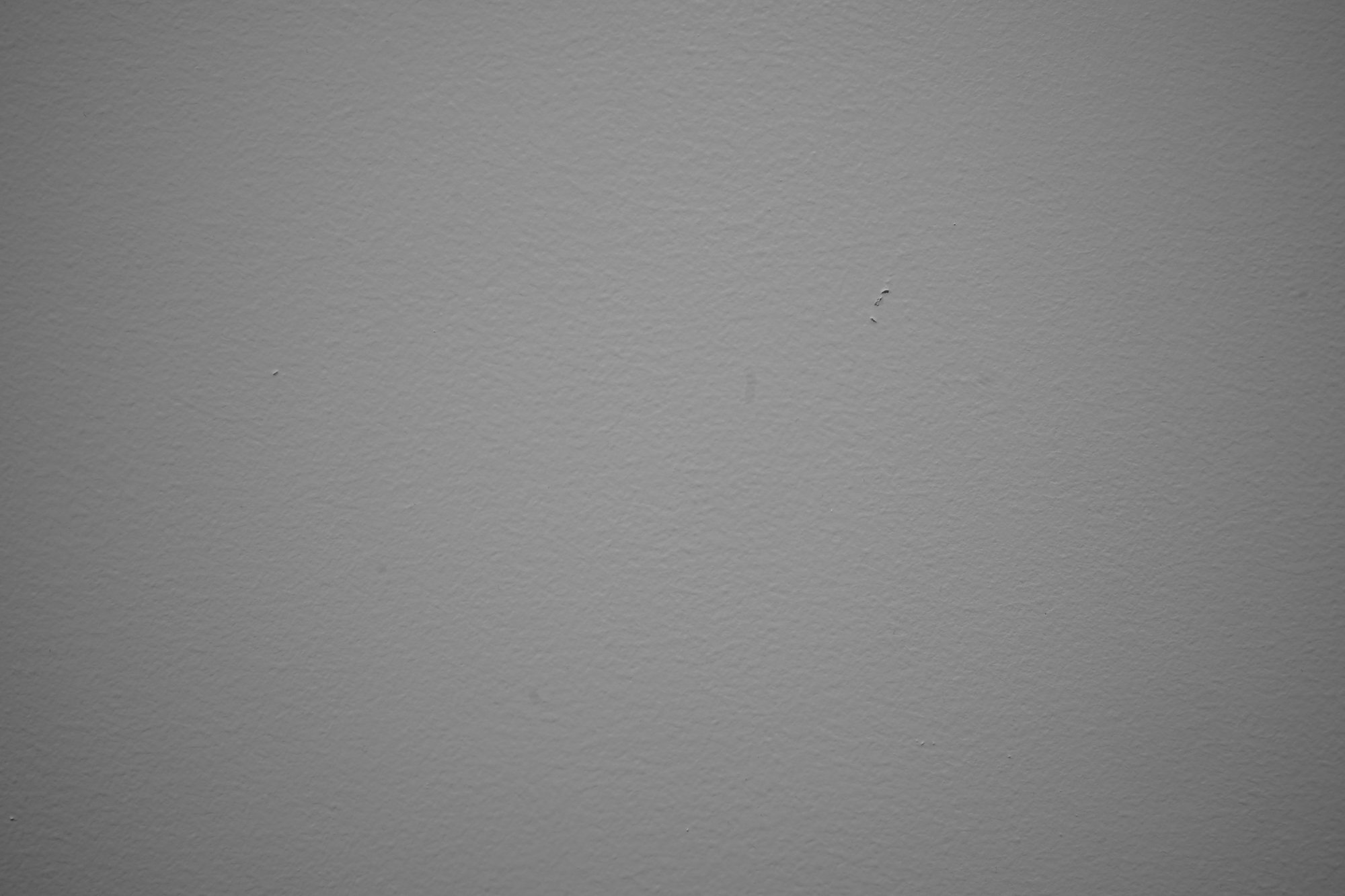 |
| F11 |  |
| F16 |  |
Bokeh
Bokeh is a Japanese term describing the quality of the background blur. It does not relate to the depth of field but to the areas in the image that are beyond the range that is expected to be in focus.
Bokeh is highly subjective. In general, a smooth bokeh with blurred shapes and contours is generally perceived as being of a higher quality. A shallow depth of field does not always equate a more pleasing bokeh.
To evaluate the characteristics of the background blur, we took pictures at varying apertures, using a scene with a lot of detail and bright highlights. The following images show the results.
| F2.8 |  |
| F4 |  |
| F5.6 |  |
| F8 |  |
| F11 |  |
| F16 |  |
| F22 |  |
Thanks to the F2.8 maximum aperture, depth of field can be made very shallow. The highlights and shapes are pleasantly blurred, although there is some unwanted definition (or “nervousness”) on well-defined edges. Good results, if not perfect.
Transitions between in-focus and out-of-focus are gradual and quite pleasing. In this the Tamron 35mm does very well indeed.
Highlights are not perfectly round-shaped at smaller apertures. The company claims the iris remains “almost completely circular up to two stops from the maximum”. The image below shows that at F5.6, highlights are not fully circular. On the flip side, they have an even texture and no distracting patterns.
Flare and Ghosting
Flare is a decrease in contrast caused by reflections on internal lens elements. Ghosting is the appearance of orb-shaped artifacts in an image containing a light source, caused by the same internal reflections. High-quality coatings reduce the importance of flare and ghosting in an image.
We test flare and ghosting by taking pictures of a bright light source positioned at the center and on an edge of the frame, at varying apertures.
Test results at 35mm
| Center | Corner | |
| F2.8 |  | 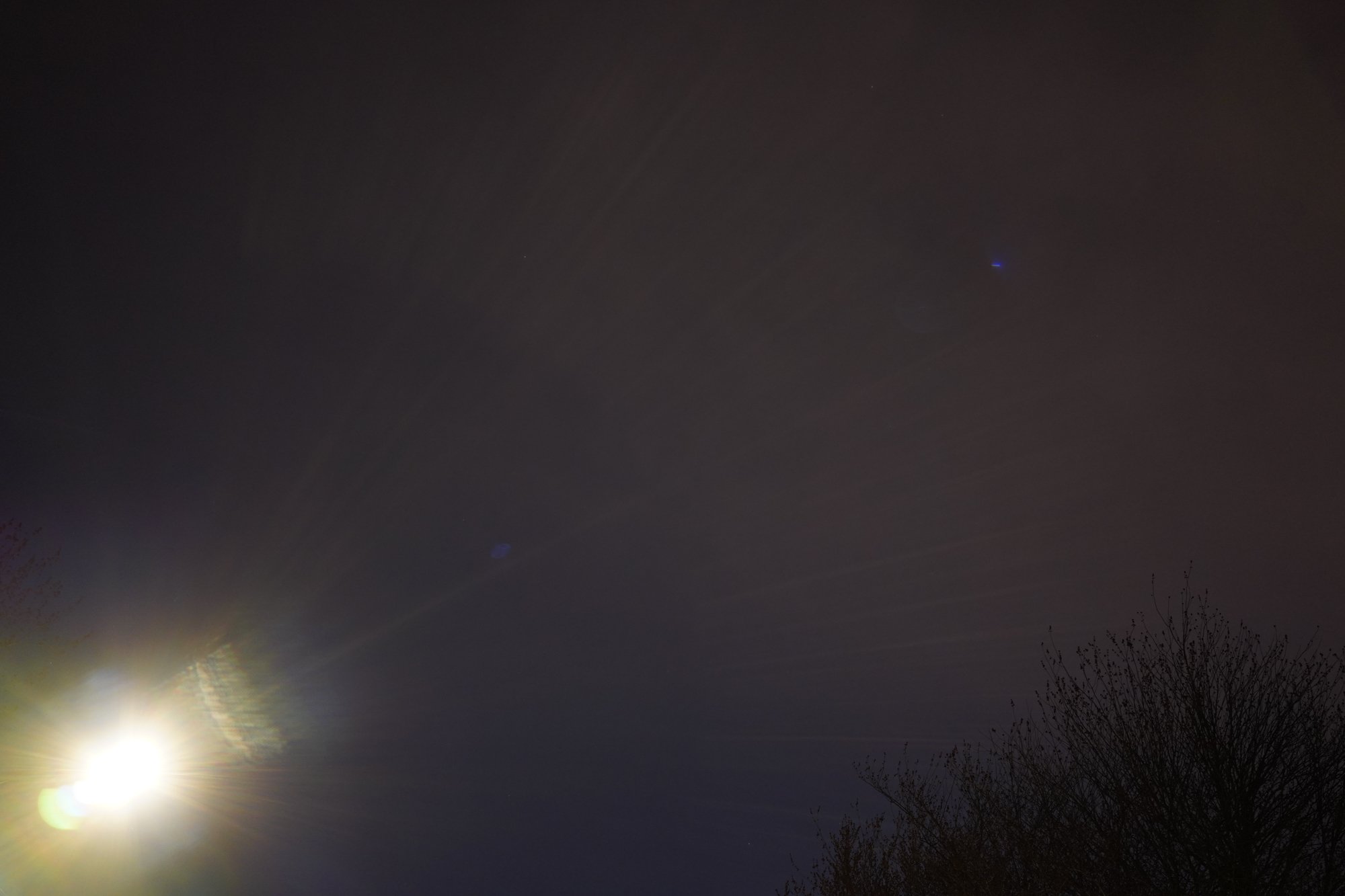 |
| F4 | 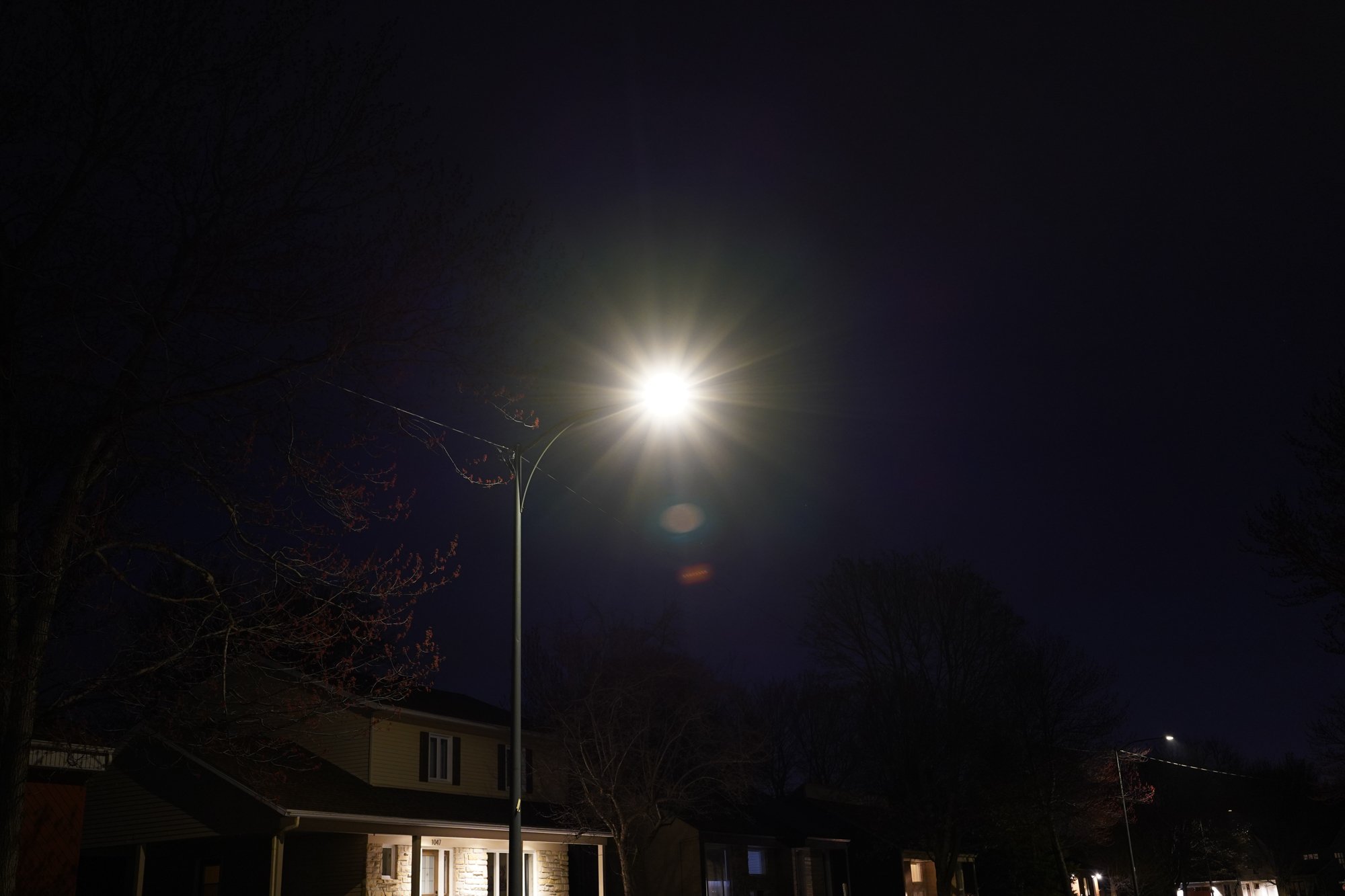 |  |
| F5.6 | 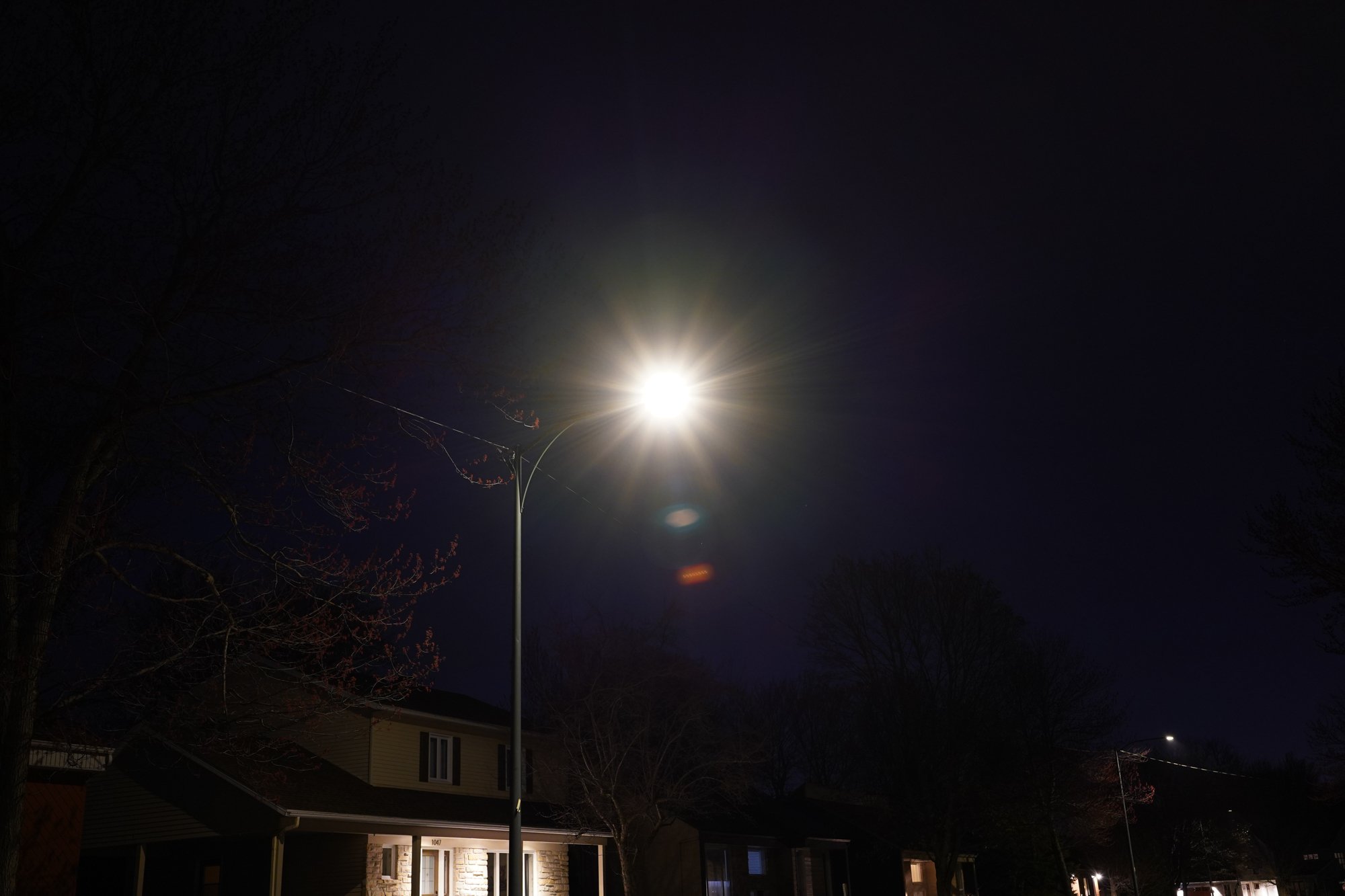 |  |
| F8 | 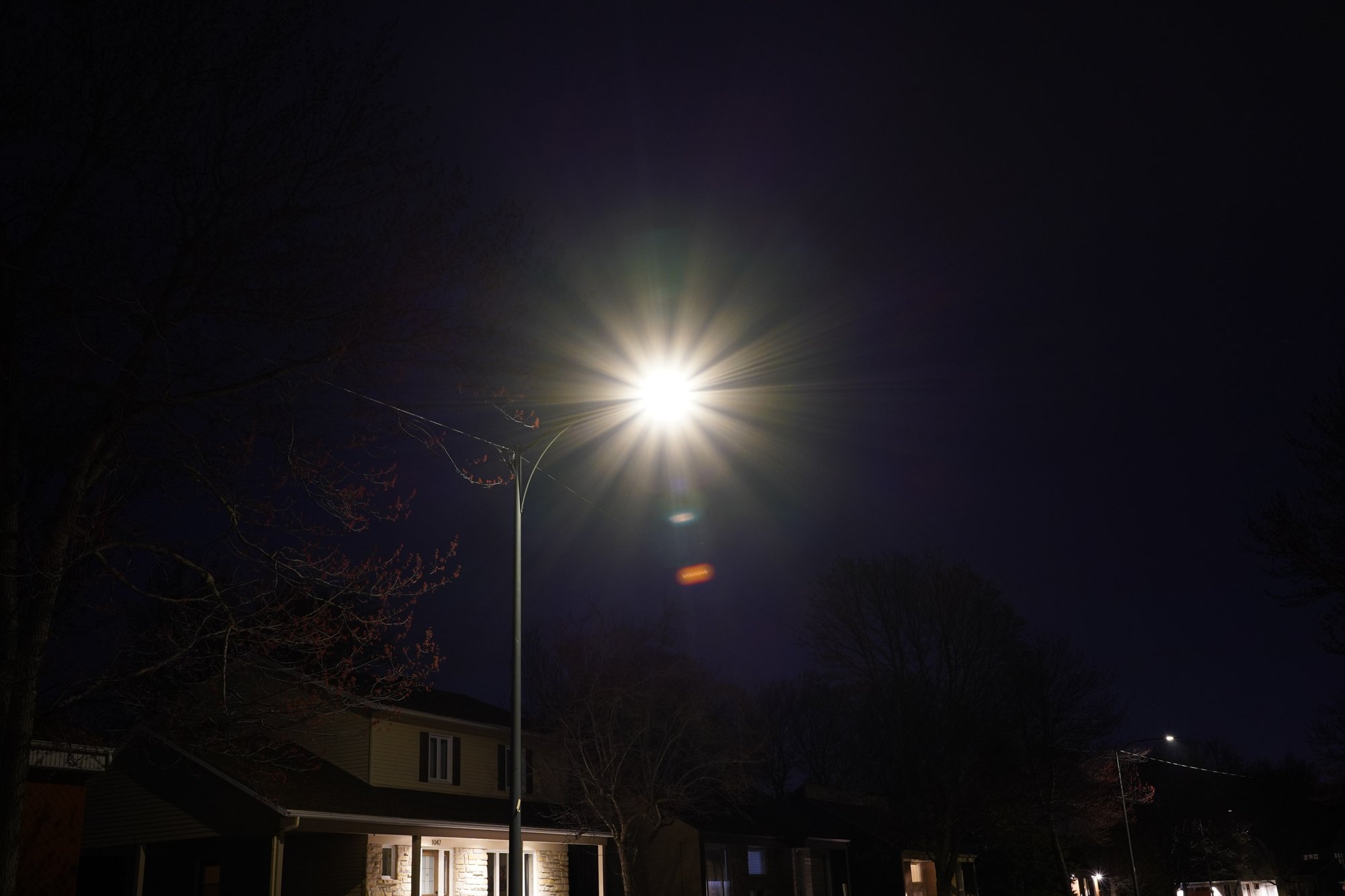 | 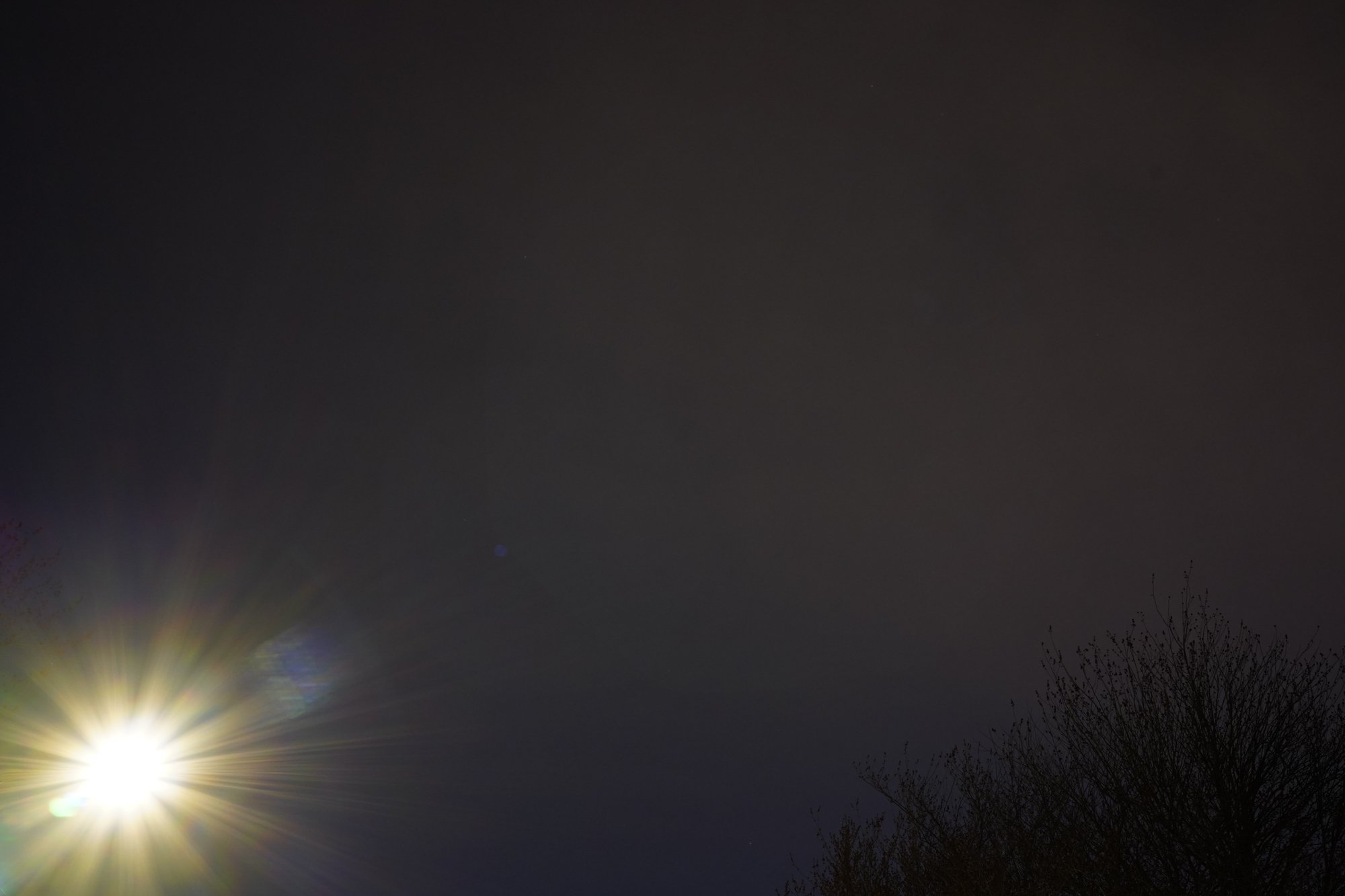 |
| F11 | 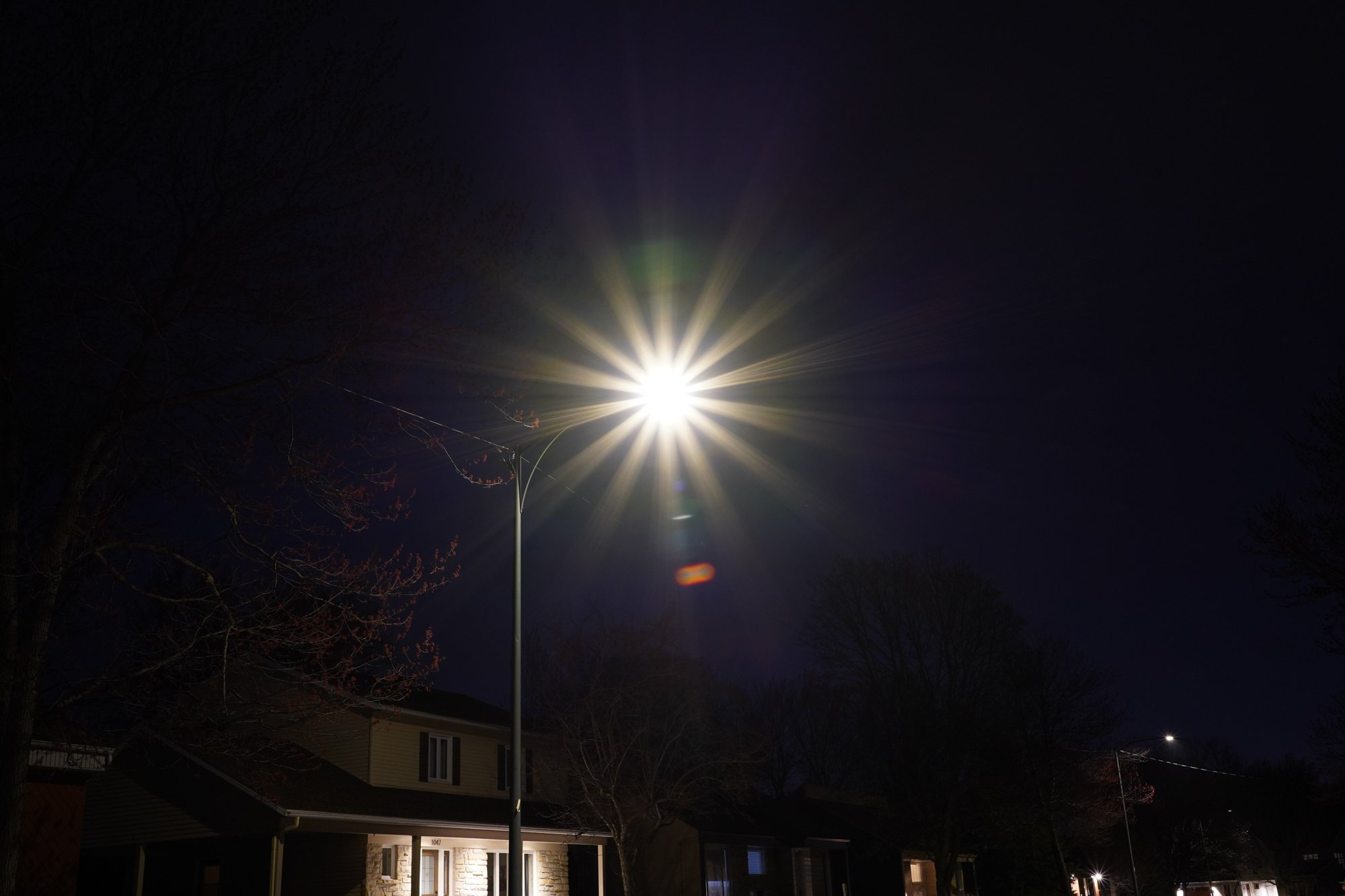 | 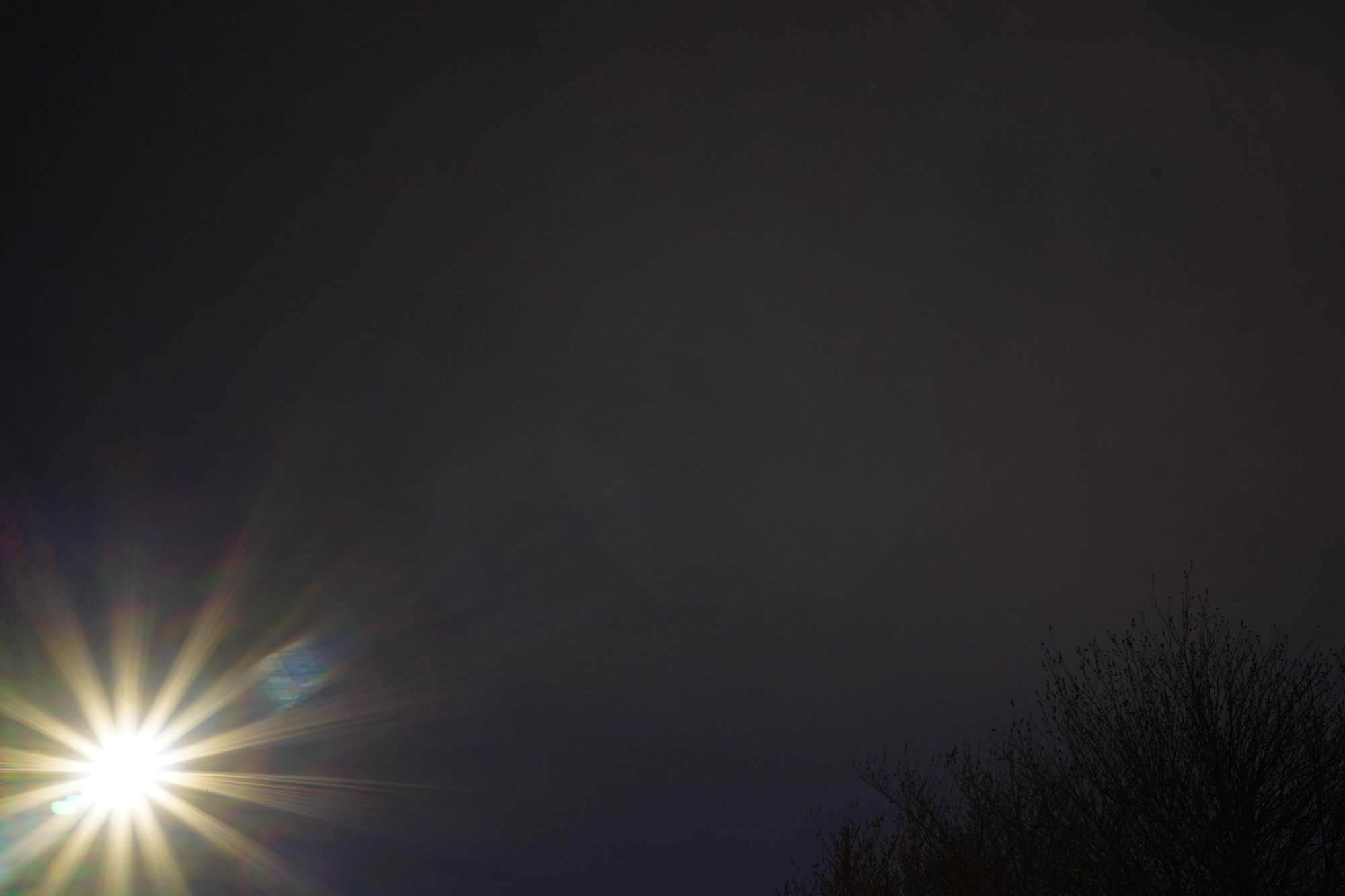 |
| F16 | 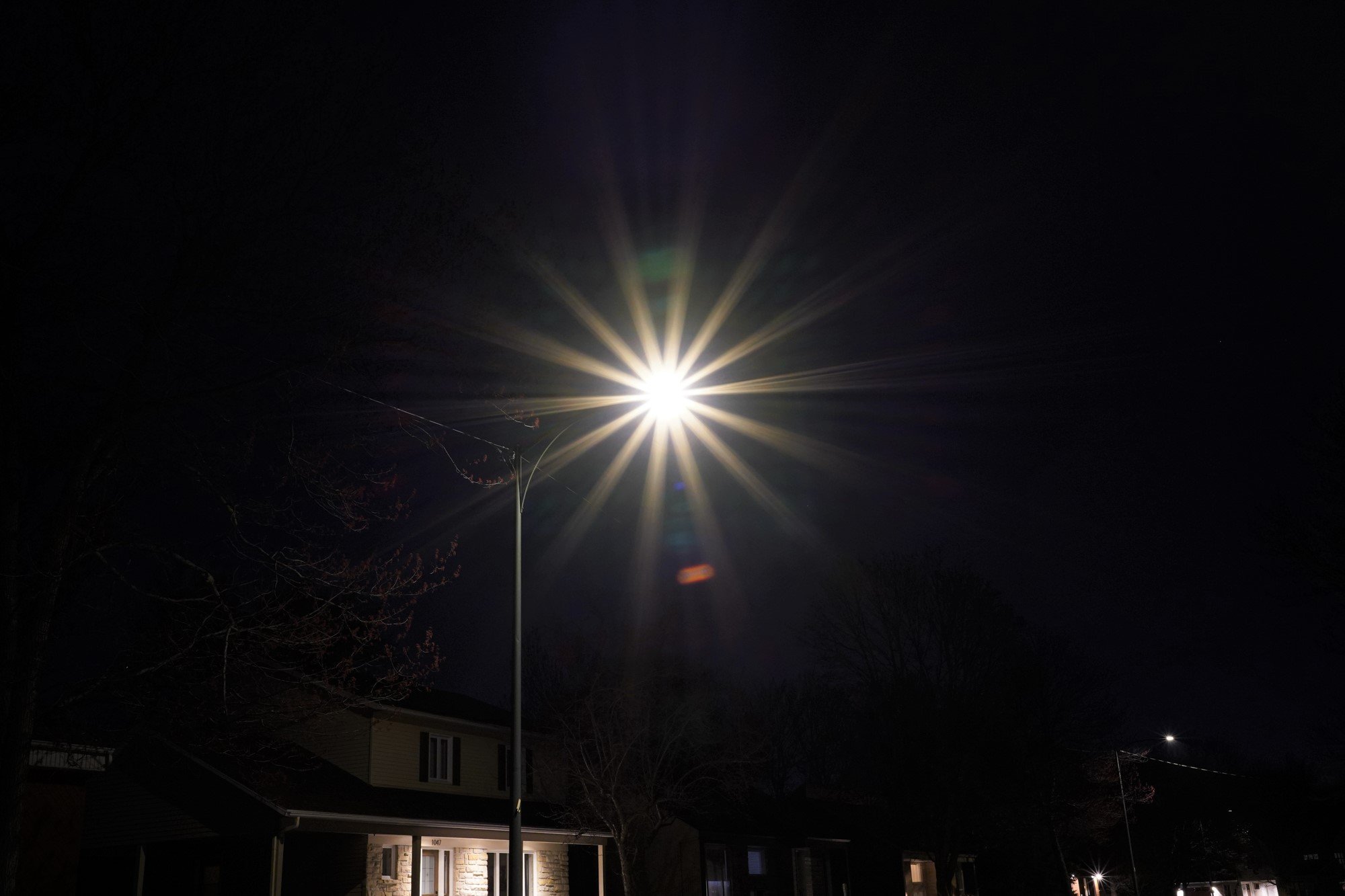 | 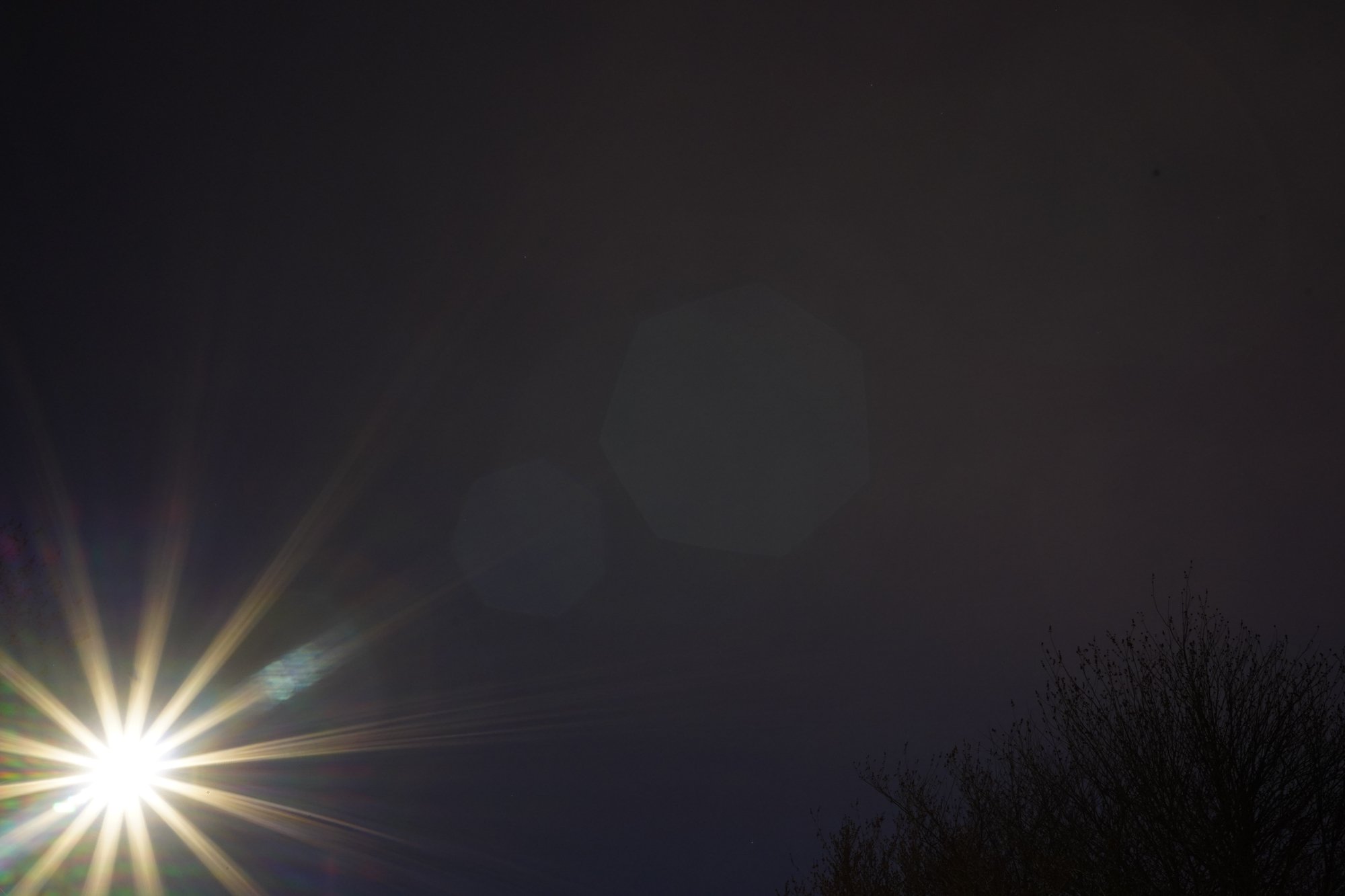 |
| F22 | 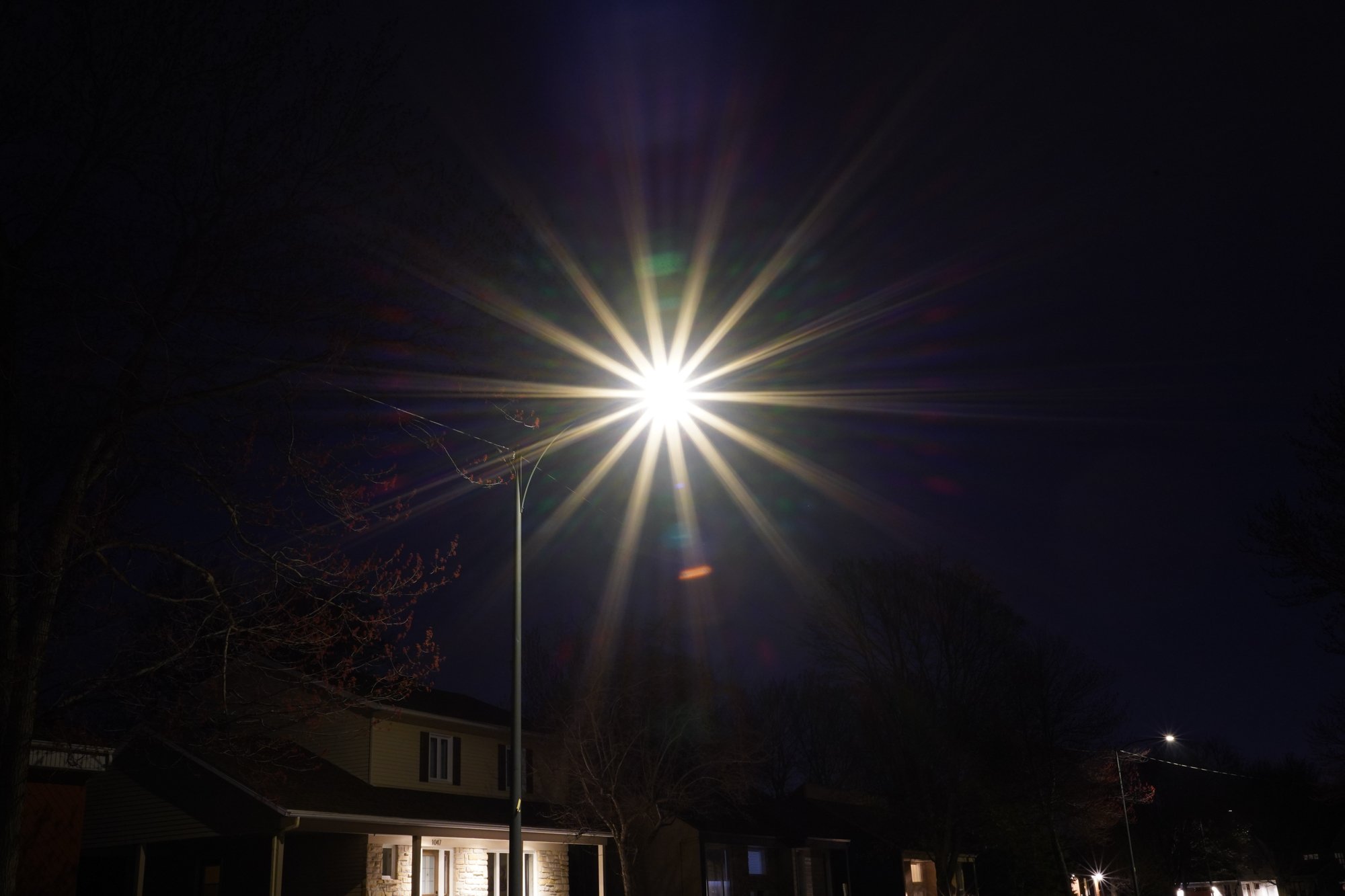 | 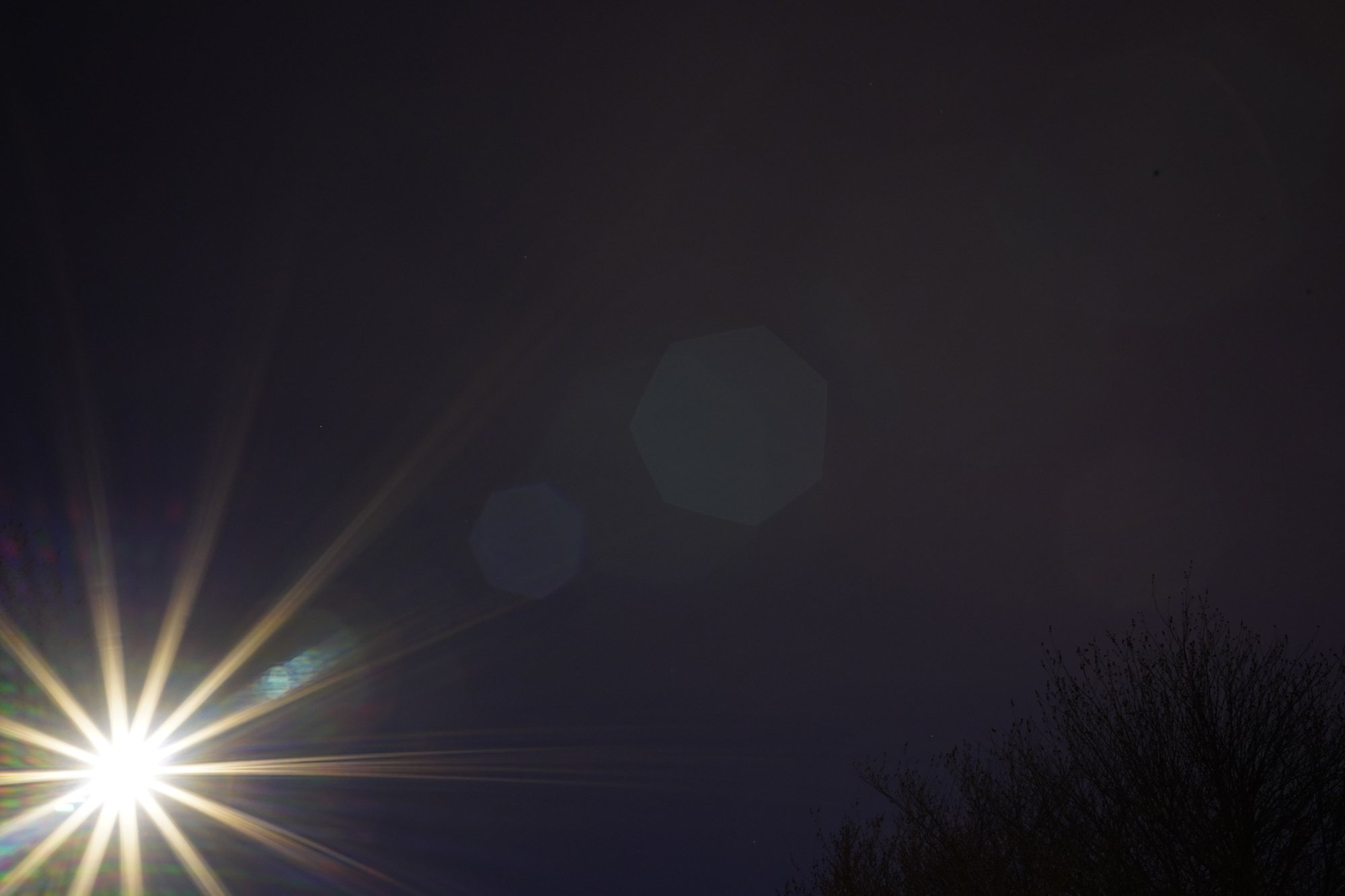 |
In the center, there are ghosts below the light source at wider apertures, joined by others as the aperture closes to F8 and smaller. This is accompanied by flare around the light source, becoming visible at F11. A flare pattern, made of colored spots appear, becoming more visible at F16 and F22.
With the light in the corner, wide open there are a few ghosts visible, and a lot of light streaks. There is also some flare near the source. The streaks disappear as the aperture closes, and flare diminishes also. The ghosts visible wide open disappear, but are replaced by some others which become more defined at F16 and F22.
In summary, flare and ghosting is not catastrophic, but not particularly impressive either. In this regard, the 35mm does marginally better than the 24mm, but much worse than the 20mm.
Chromatic aberration
Chromatic aberration (CA) occurs because different colours do not always have the same focal point. With modern lenses designs, which are better corrected than vintage designs, this is more likely to occur in out-of-focus areas. CA effects are more visible near fast transitions from bright to dark areas.
Most modern cameras have built-in tools to remove CA. Digital manipulations can have an impact on other aspects of an image, thus it is useful to know how a lens performs when those automatic corrections are disabled.
Our test sets up the camera at 45° and focuses on the center of the frame, with targets at the center, top and bottom. Images are captured at varying apertures.
| Top | Center | Bottom | |
| F2.8 | 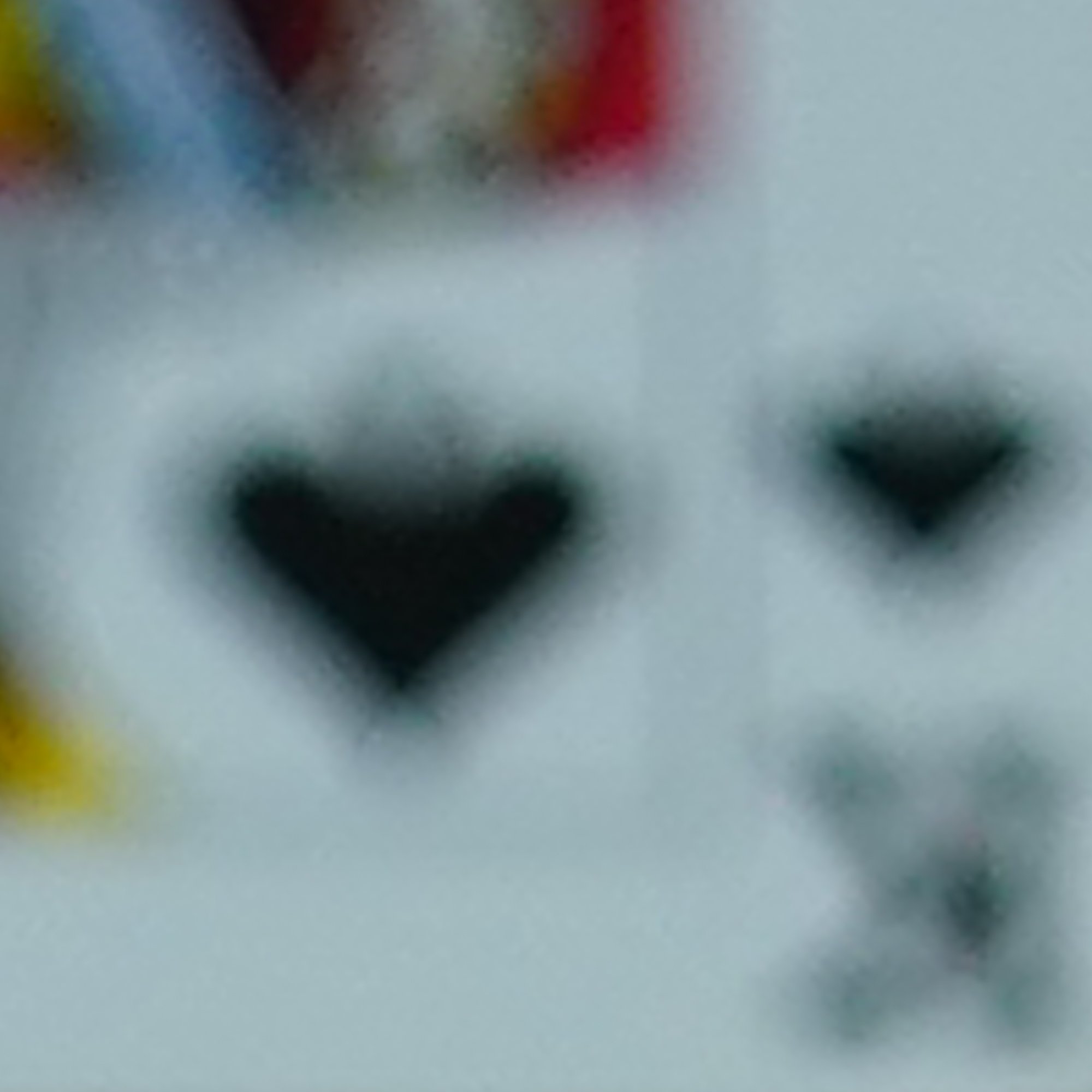 |  |  |
| F4 | 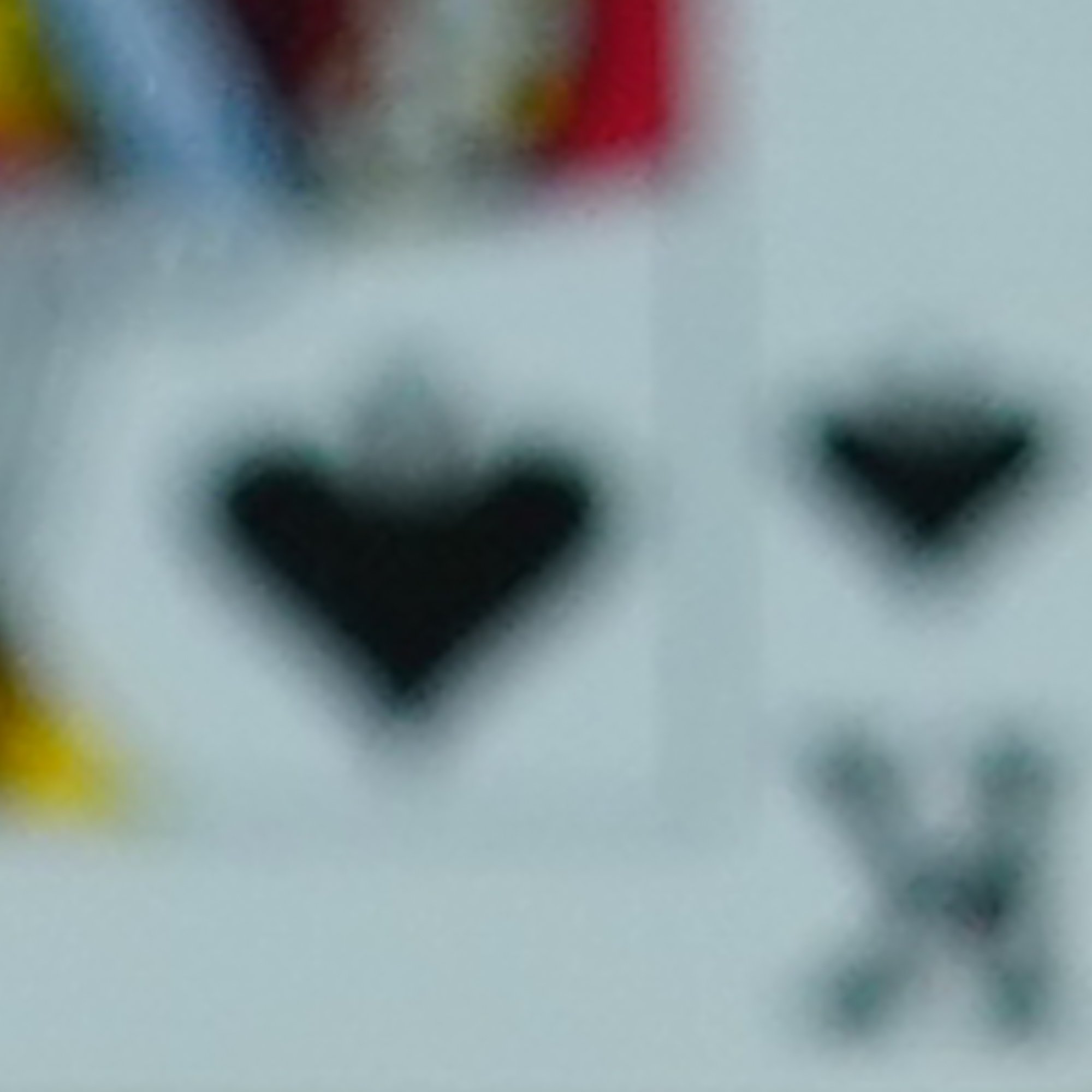 |  | 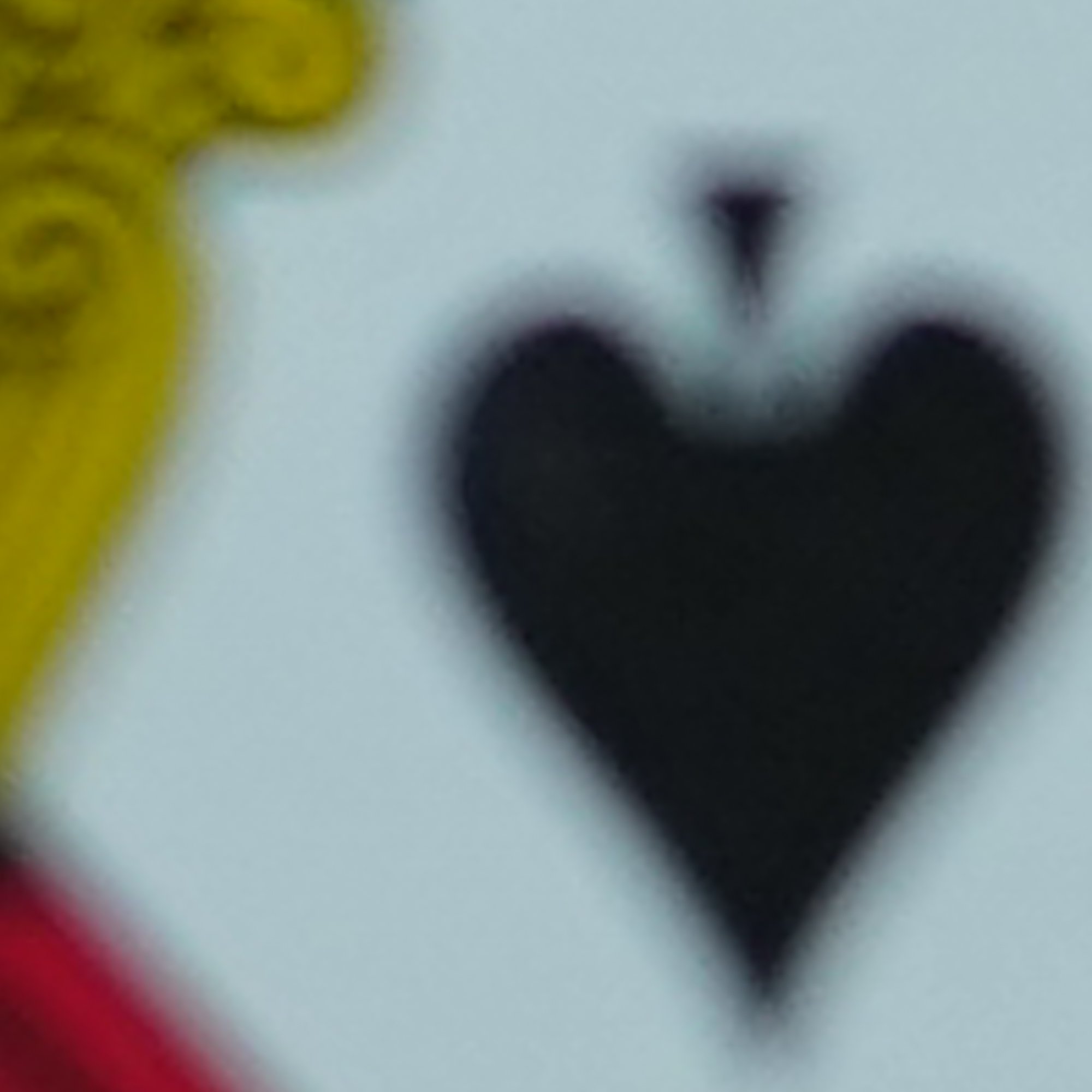 |
| F5.6 | 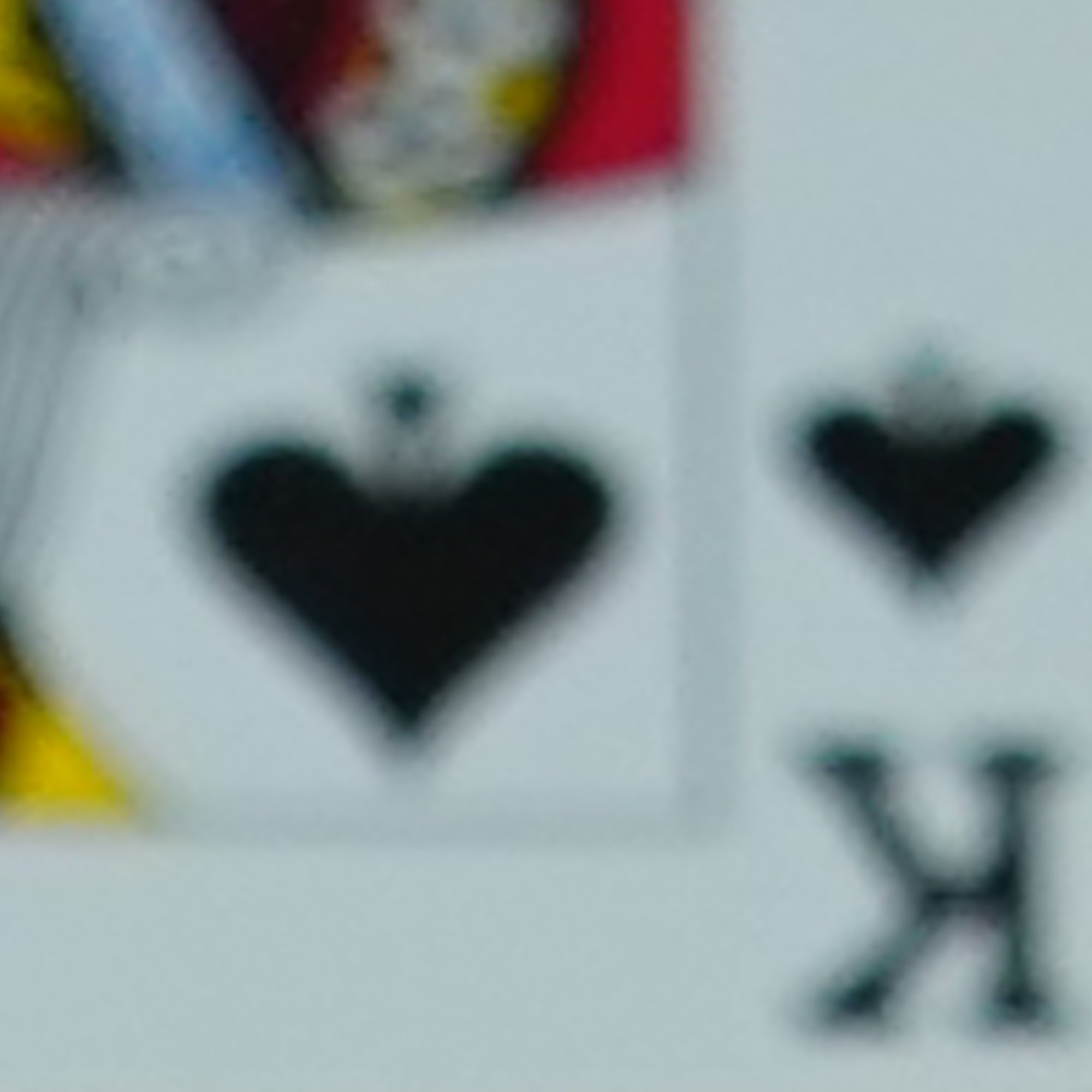 |  | 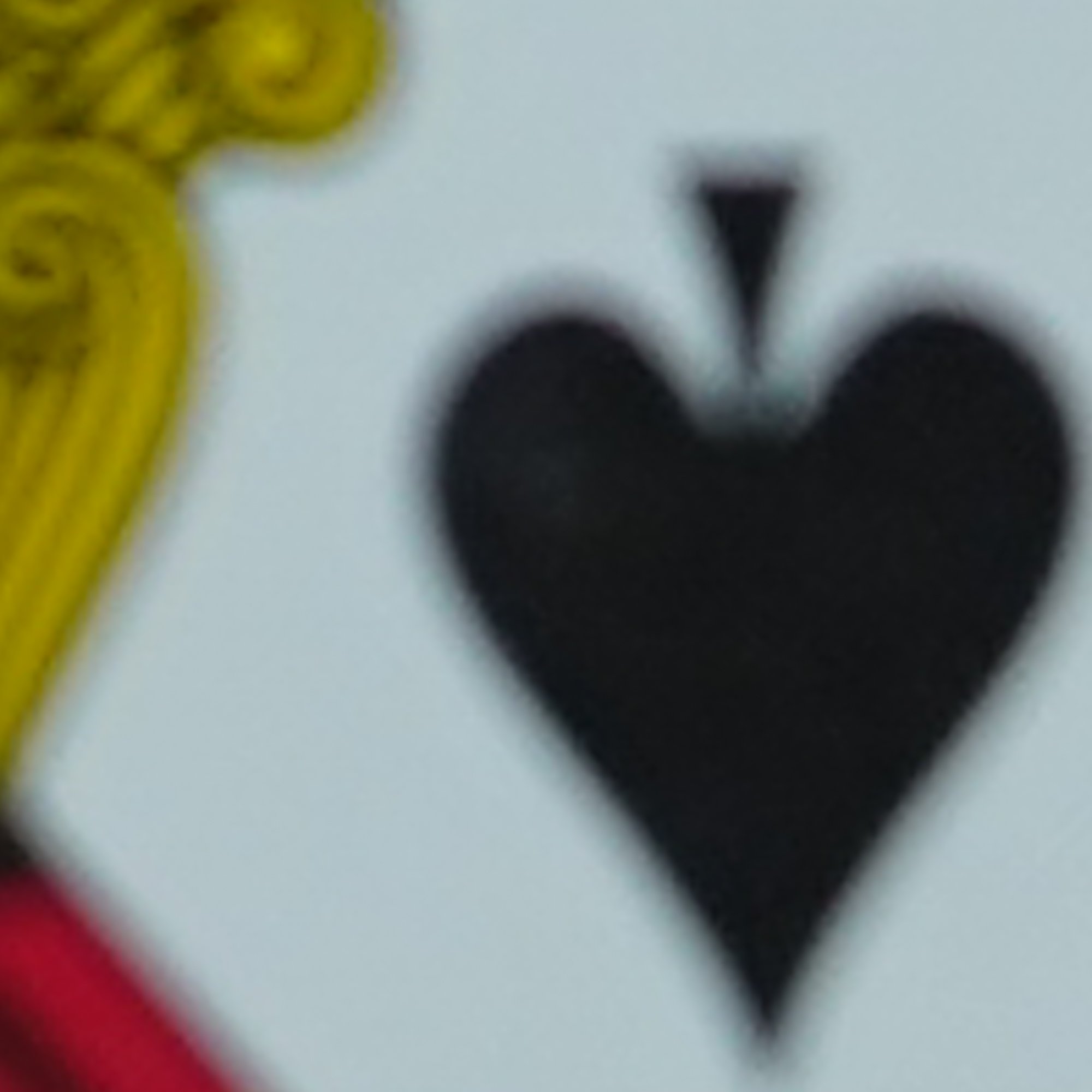 |
| F8 |  |  |  |
| F11 | 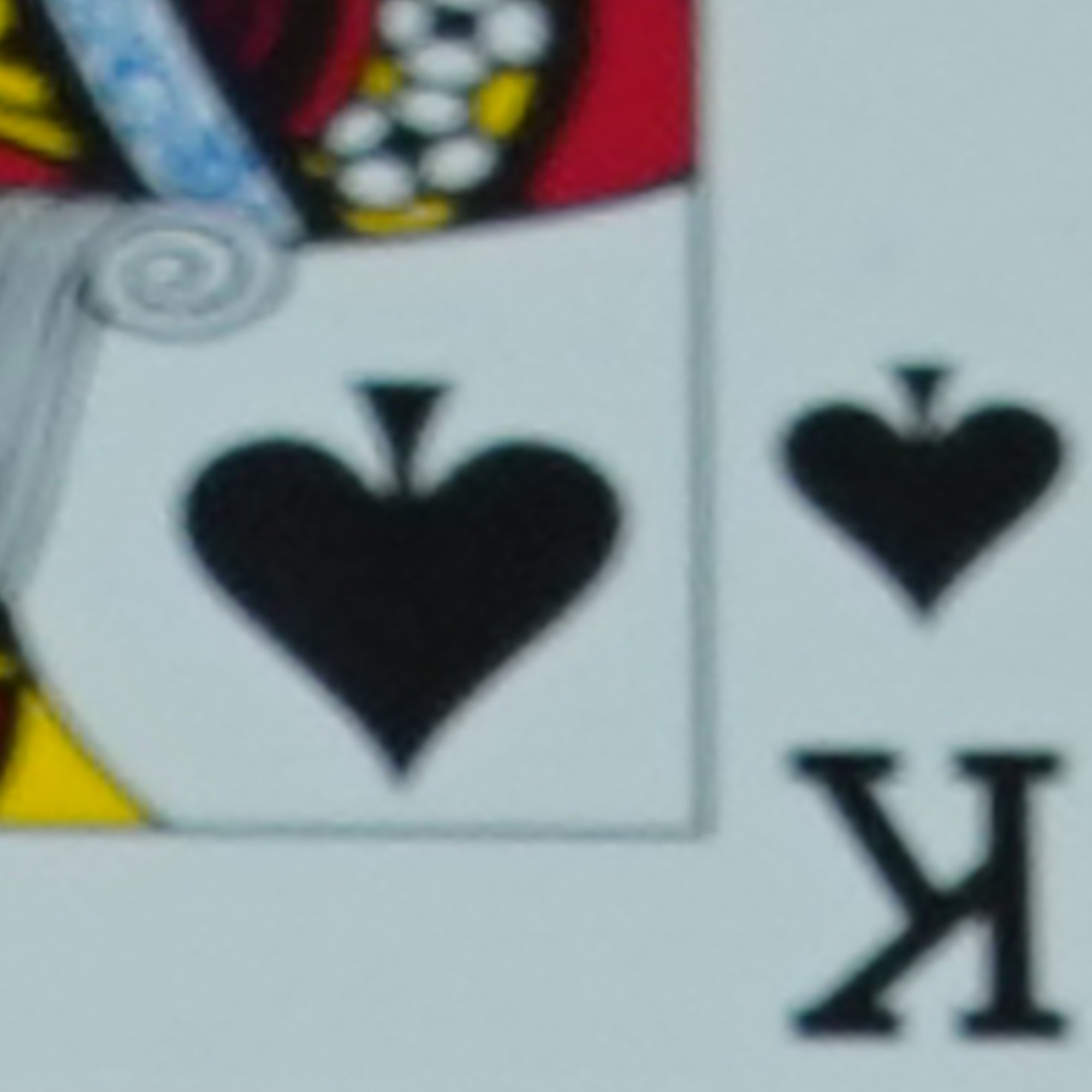 |  | 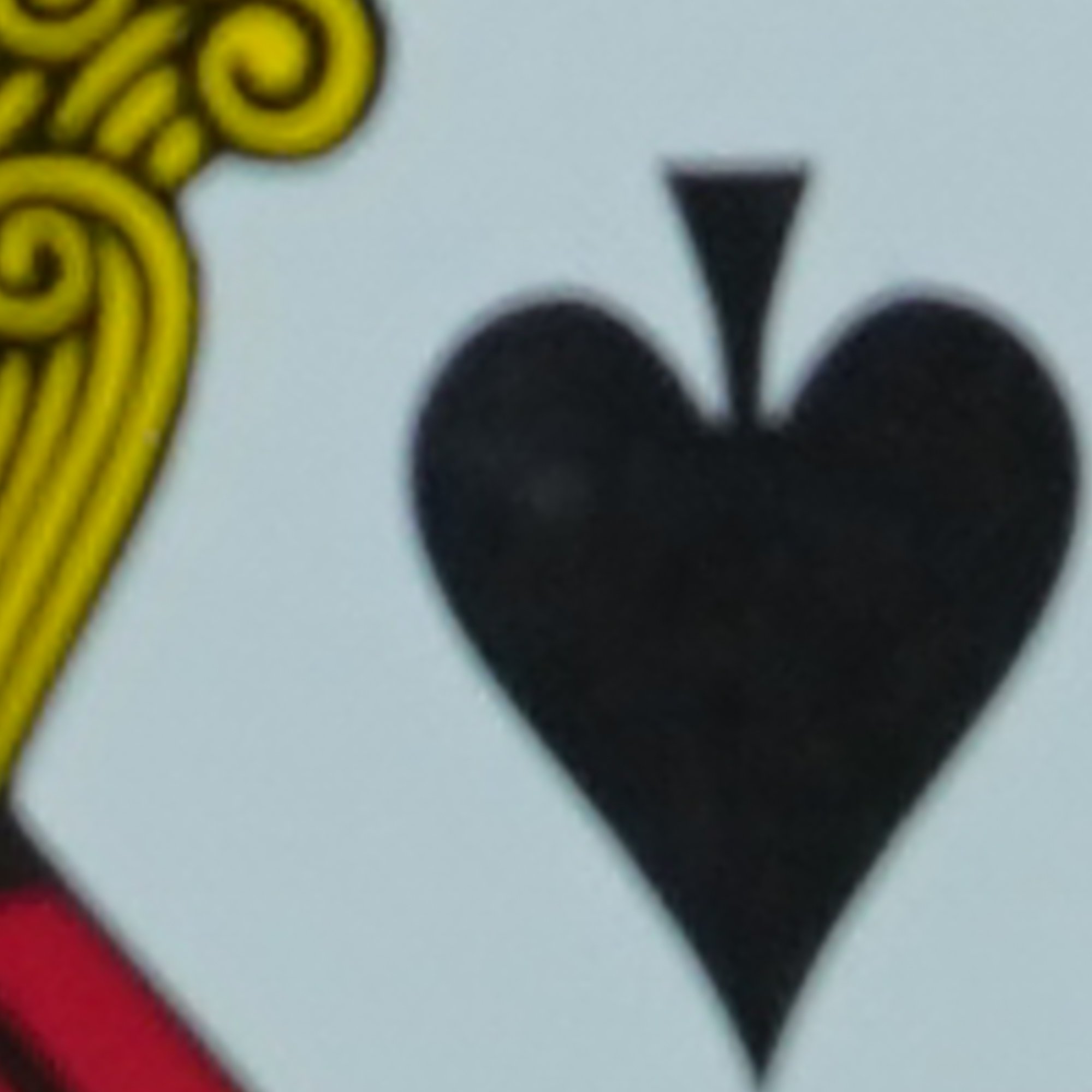 |
| F16 | 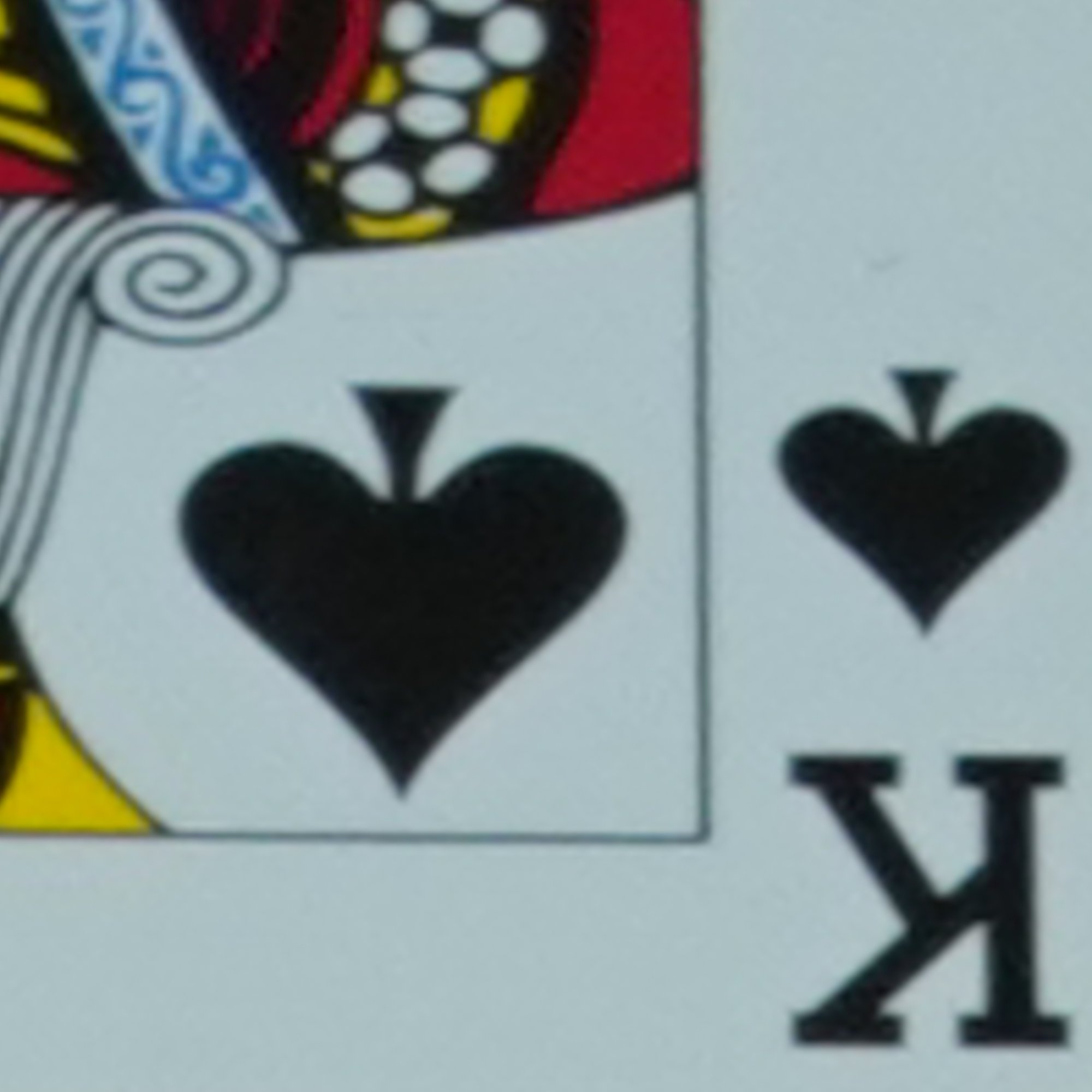 |  | 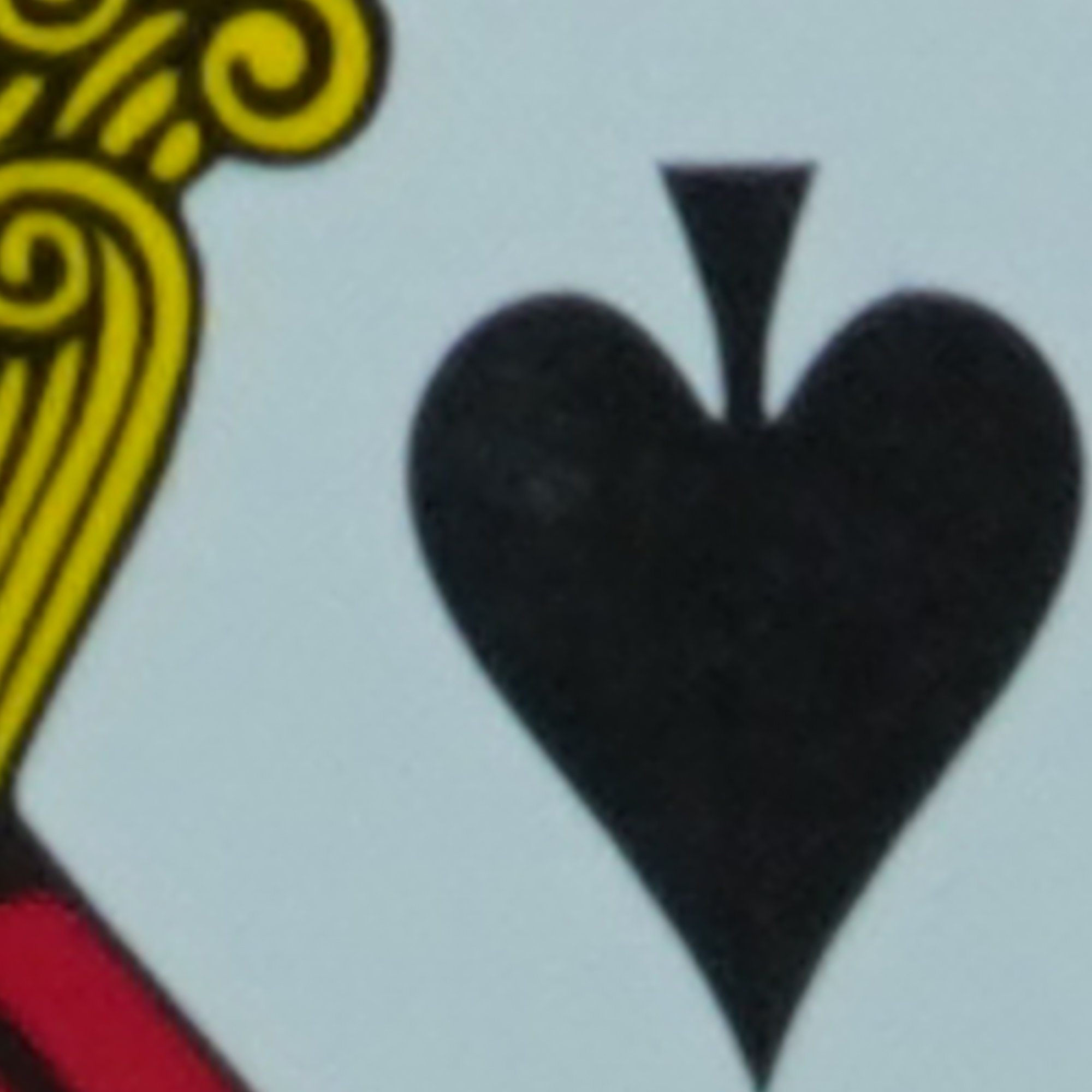 |
| F22 | 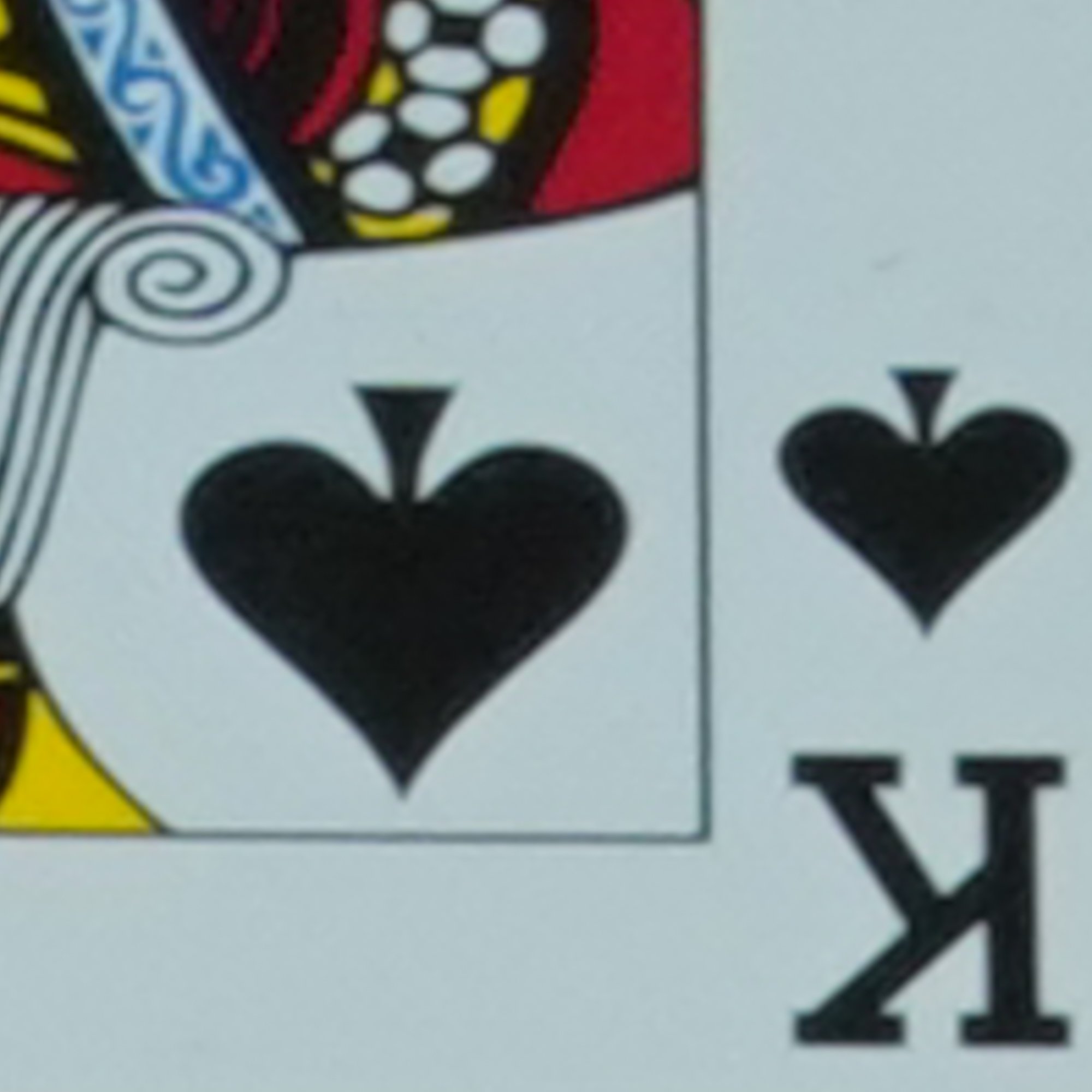 |  | 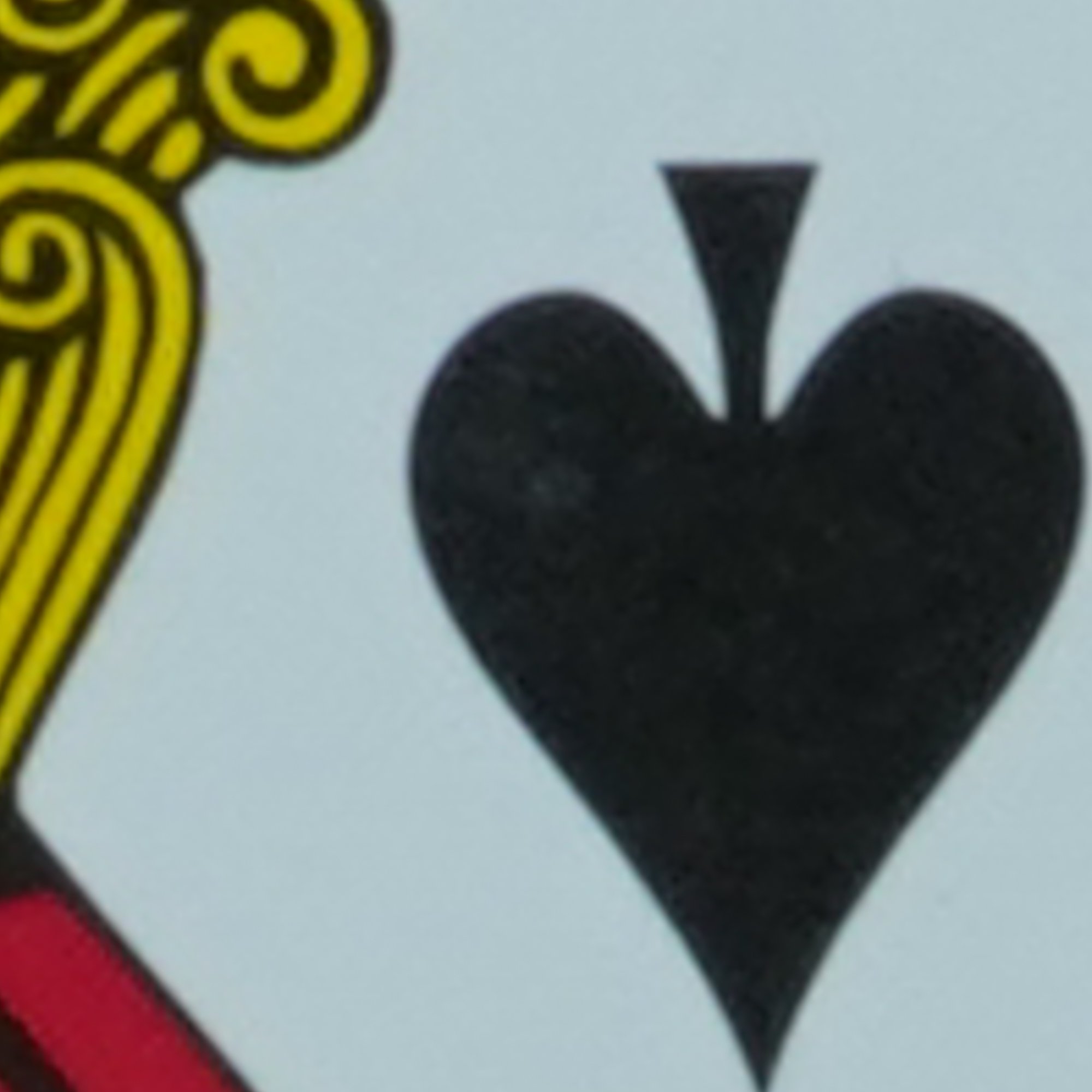 |
Chromatic aberration is handled extremely well by the Tamron 35mm. In fact, there is nothing to see, the Tamron 35mm shows no evidence of chromatic aberration.
Purple fringing
There were no occurrences of purple fringing in our tests with the Tamron 35mm.
Distortion
Distortion refers to a lens’s ability to represent straight lines as straight lines… Wide angle lenses frequently generate barrel distortion, while longer focal lengths are more likely to cause pincushion distortion.
35mm lenses are comparatively easy to design and as such, we do not expect strong distortion.
We use a standard test pattern of straight lines and test at 35mm.
| Uncorrected | 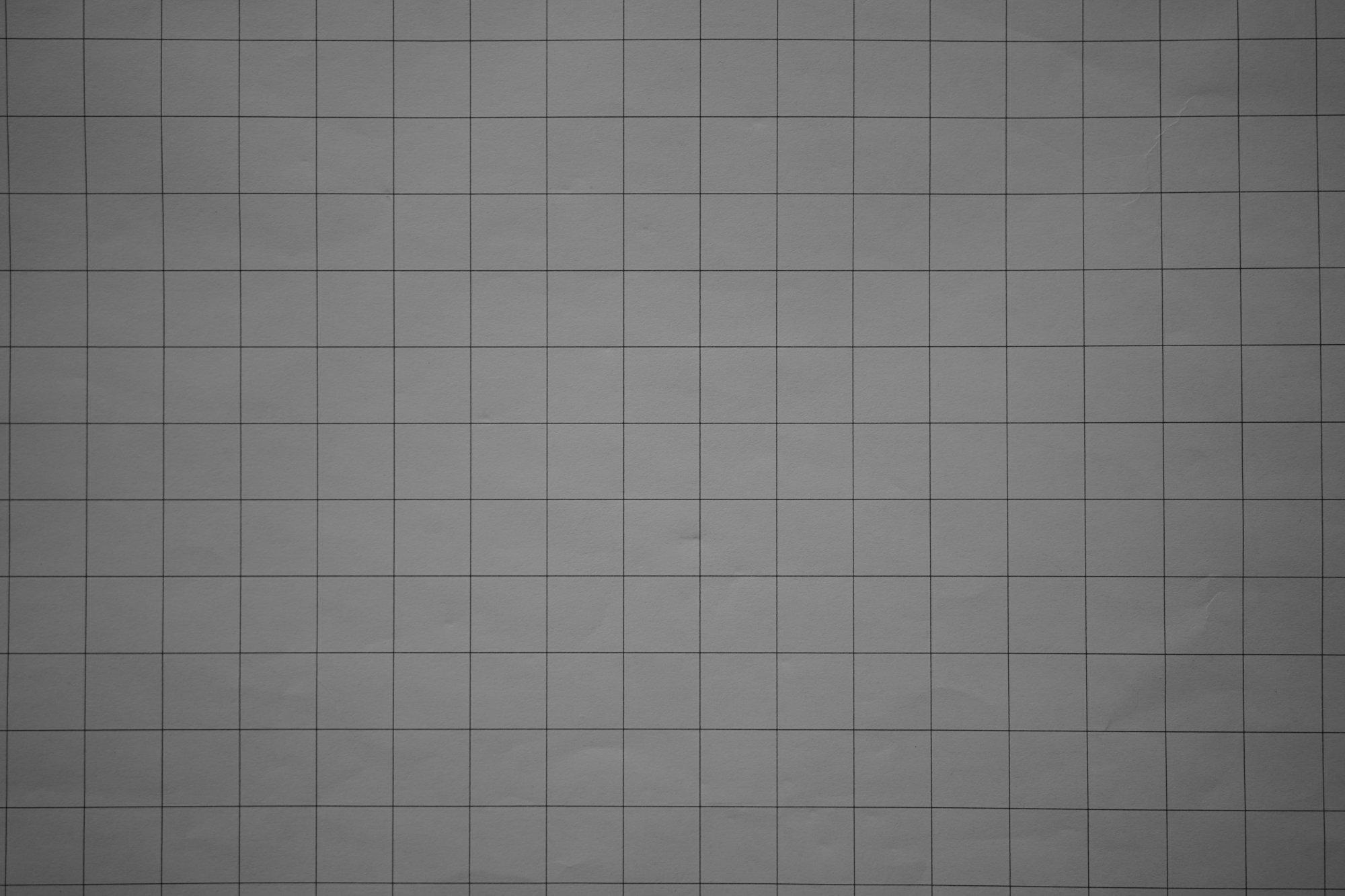 |
| Corrected |  |
The Tamron 35mm shows almost no distortion. We observed -0.5% of pincushion distortion. Surprisingly, the camera’s automatic correction had no effect on the image, possibly because the effect is low to begin with.
This is clearly an area where the designers decided to rely on automated corrections. Still, the 35mm is much better than the Tamron’s 20mm, but worse than the best, such as Laowa’s 15mm F2.
Sample images
Here is a gallery of samples images captured with the Tamron 35mm. You can click on individual images for a larger view.

A7C, F5.6, 1/250s, ISO 200 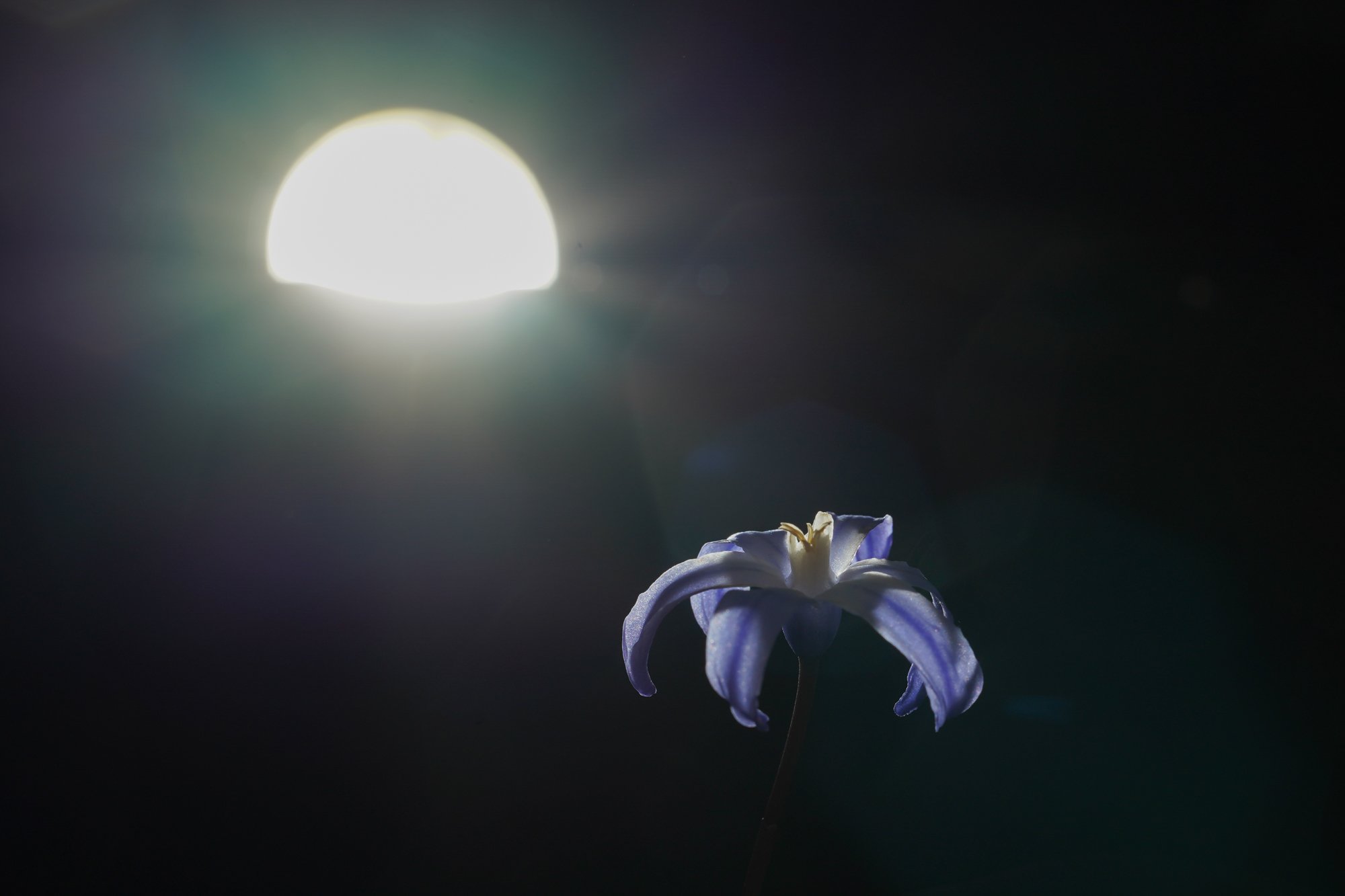
A7C, F11, 1/60s, ISO 200 
A7C, F5.6, 1/1250s, ISO 200 
A7C, F8, 1/250s, ISO 400 
A7C, F5.6, 1/2000s, ISO 1250 
A7C, F8, 1/500s, ISO 400 
A7C, F9, 1/4000s, ISO 200 
A7C, F4, 1/1000s, ISO 1250 
A7C, F3.2, 1/2500s, ISO 160 
A7C, F3.2, 1/640s, ISO 160 
A7C, F3.2, 1/125s, ISO 160 
A7C, F3.2, 1/200s, ISO 160 
A7C, F3.5, 1/40s, ISO 1250 
A7C, F3.5, 1/100s, ISO 160 
A7C, F5.6, 1/1000s, ISO 200 
A7C, F5, 1/800s, ISO 160 
A7C, F7.1, 1/1600s, ISO 200 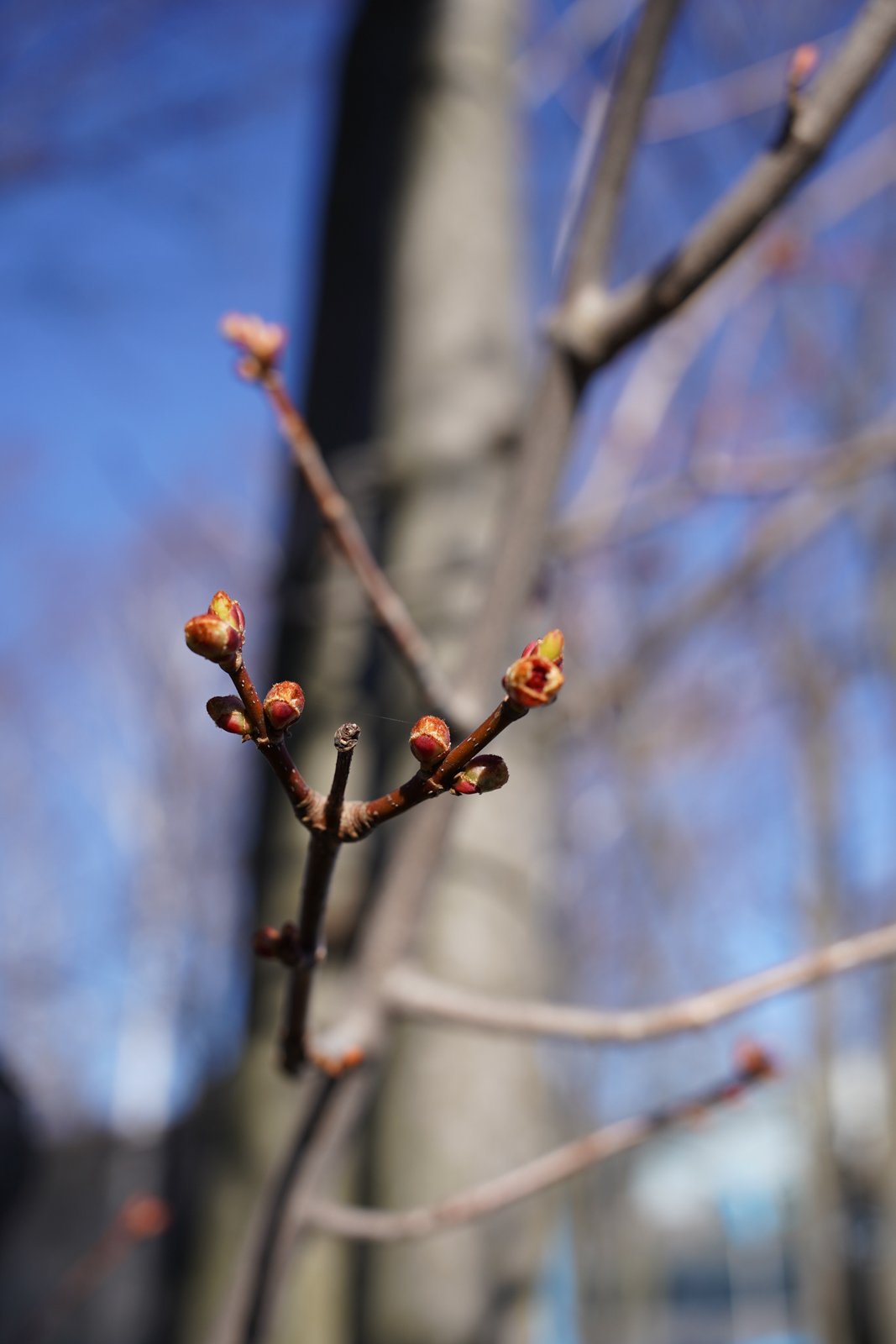
A7C, F5.6, 1/640s, ISO 200 
A7C, F3.2, 1/2000s, ISO 200 
A7C, F4, 1/1600s, ISO 160 
A7C, F5.6, 1/125s, ISO 200 
A7C, F5.6, 1/800s, ISO 200 
A7C, F5, 1/2000s, ISO 160 
A7C, F4, 1/1250s, ISO 160 
A7C, F6.3, 1/640s, ISO 160 
A7C, F4, 1/4000s, ISO 160 
A7C, F3.5, 1/4000s, ISO 160 
Full size 
A7C, F4, 1/12000s, ISO 200 
A7C, F7.1, 1/1250s, ISO 200 
A7C, F3.5, 1/2000s, ISO 160 
A7C, F4, 1/15s, ISO 1250 
A7C, F3.2, 1/2000s, ISO 200
Conclusion
With this review, we have finished our exploration of Tamron’s trio of compact, weather resistant prime lenses for Sony’s E-mount.
The 35mm F2.8 is a worthy addition to Tamron’s lineup. Comparing it with the company’s 20mm and 24mm is inevitable, even though its focal length makes it more distinct than the 20mm and 24mm, which are much closer in their application. The 35mm is probably a better choice for a jack-or-all-trades lens. Its moderate focal length, close focusing abilities, small size and good optical performances make it a versatile and reliable lens. The other two are more directly aimed at landscapes photography. The three lenses offer the same close-up abilities, but the slight compression offered by the 35mm’s focal length often makes composition easier. In other words, if a user was to own only one lens in Tamron’s trio, the 35mm is probably the most versatile choice.
Let us get something out of the way: how do the three lenses compare?
Without considering the focal length, and looking only at pure optical performances, the 20mm is the best lens of this group, however. In particular, its handling of flare puts it above the other two. It also creates more beautiful starbursts. It also offers surprisingly good sharpness and uniformity. The 35mm is probably a close second, but the three lenses are generally excellent performers.
Build quality is good for this lens. The 35mm offers basic features, with no controls or switches, but it is well assembled, very light, and is even weather resistant.
Optical performances are, for the most part, excellent. In particular, sharpness is a strong aspect, with high resolution and impressive uniformity across the frame. The lens performs well even wide open.
Distortion is almost nil, a welcome departure from the 20mm and 24mm.
Chromatic aberration is entirely absent, as is purple fringing.
Bokeh and out-of-focus rendering is quite good with smooth, gradual transitions. Highlights are also devoid of textures or artifacts. Edges are slightly more defined than we would like but the 35mm is a good performer regarding out-of-focus rendering.
Flare and ghosting are definitely a weak point. The effect is always present and can get very distracting, at all apertures.
Starbursts are nothing special: rays appear only at smaller apertures and tend to diverge instead of tapering.
Vignetting is another weak point. Easy to correct in post-processing, it is strong and will manifest at all apertures. Luckily it can (and should) be compensated automatically.
Autofocus is acceptable, and probably better than the lens’ reputation, but nothing unique either. Small adjustments are fast, but raking through the range takes a ludicrous amount of time in low light. In good conditions, it is adequate but not particularly fast. The lens also emits a clicking noise, which will probably be audible in videos if using the camera’s microphone.
In summary, the Tamron 35mm F2.8 is an excellent lens, versatile and reliable. It is not without flaws but those are, for the most part, easy to manage. The question is: how does it position itself in a market flooded by 35mm lenses coming from all manufacturers?
The advantages of the Tamron lie in its low price, small size and weight, coupled with upper-tier characteristics such as weather sealing and close focusing. Paired with very good optical performances, these perks make it easy to recommend, especially since Tamron permanently lowered the MRSP. Should it be considered above its competitors? At the same price, Rokinon offers a smaller lens lacking WR. At much higher price tags, several other manufacturers propose lenses with faster apertures but not always weather resistant (and quite often much larger). Still other options will lack AF (and WR) but match the Tamron’s price.
The best choice, as often, will be dictated by budget vs desired features. We can only say that the Tamron is a compelling choice, especially considering the price.
Pros
- Light, compact and weather resistant
- Great handling, craftsmanship better than expected
- Excellent sharpness and uniformity at nearly all apertures
- No CA or PF
- Almost no distortion
- Pleasing bokeh
- Useful close focusing capabilities
- Reliable AF tracking
- Low price
Cons
- No AF/MF switch, relies on camera menu
- Strong vignetting when left uncorrected
- Strong ghosting
- Slow autofocus in many situations
- AF makes subtle clicking noise
Before You Go
Do you already own this lens? Are you curious about it? If you do, we’d love to hear your thoughts in the comments below.

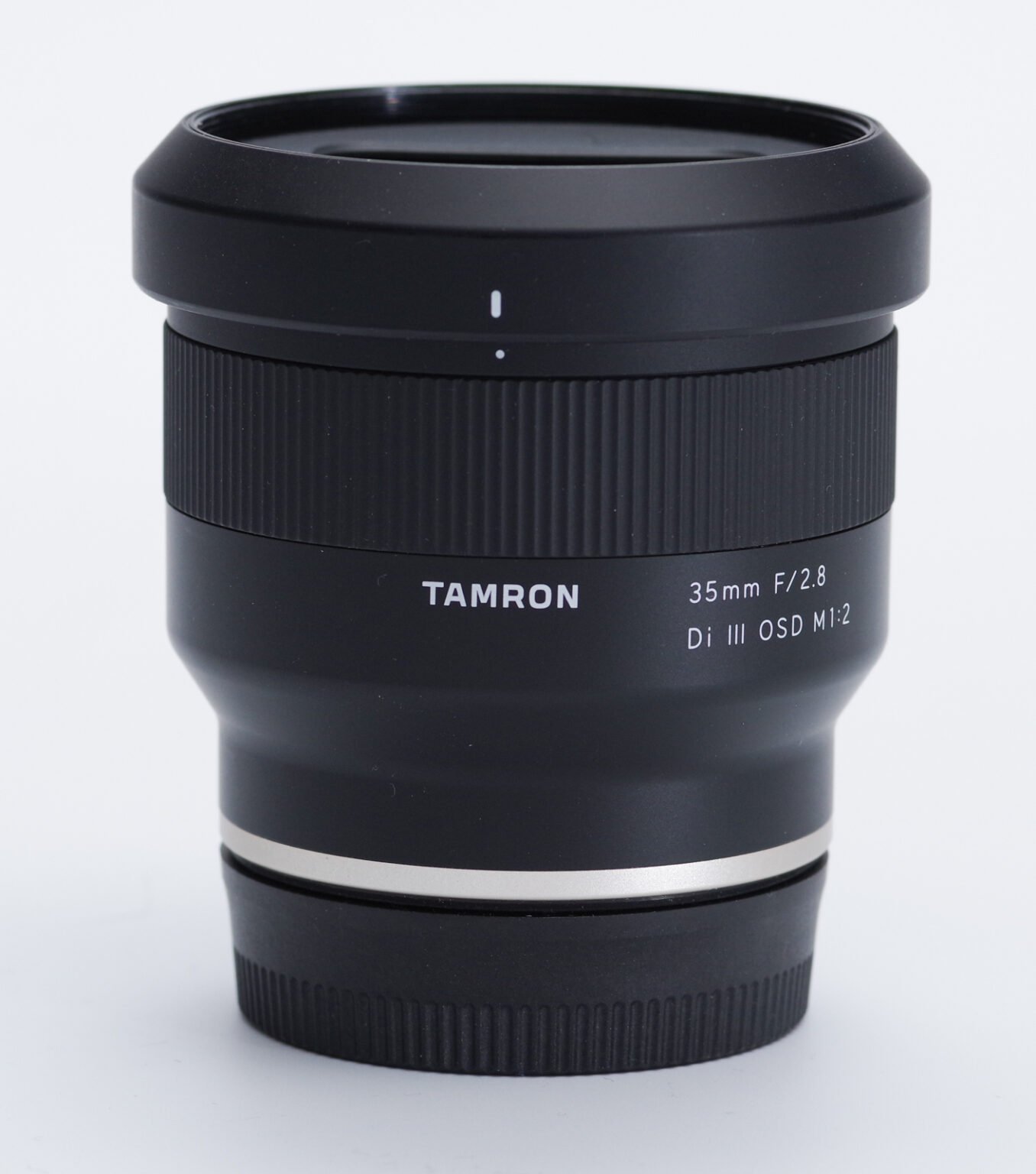






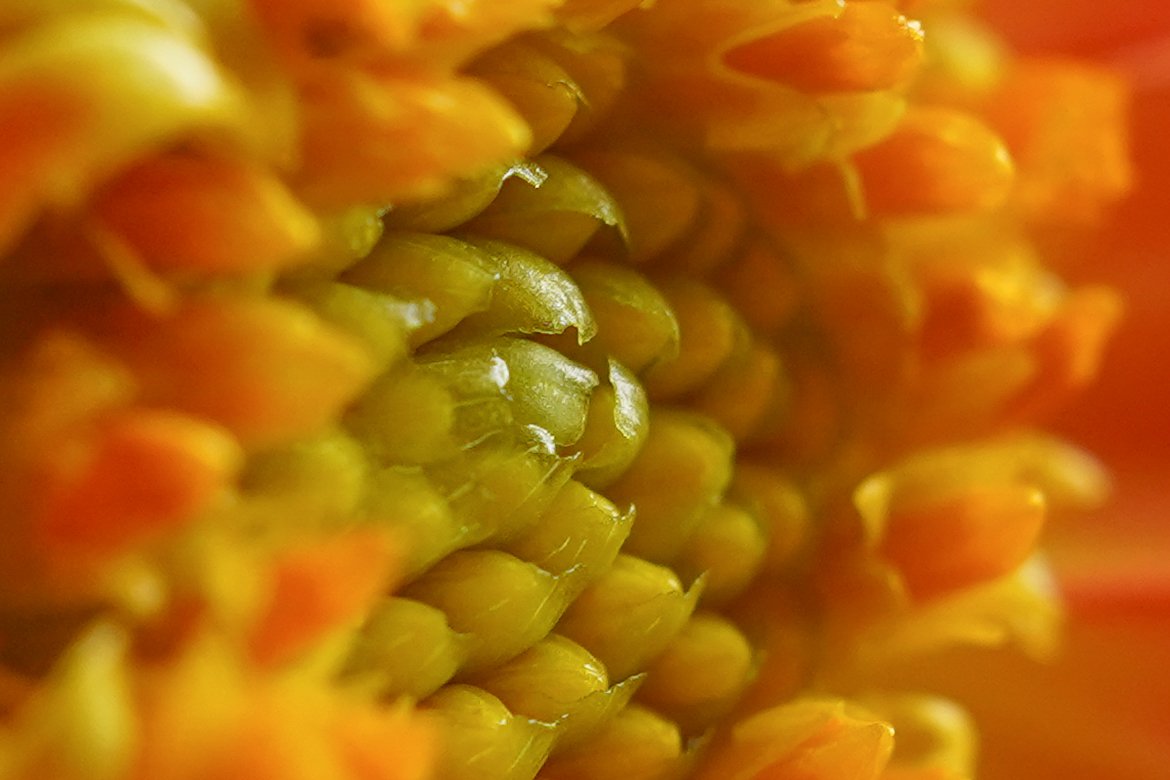


Leave a Reply